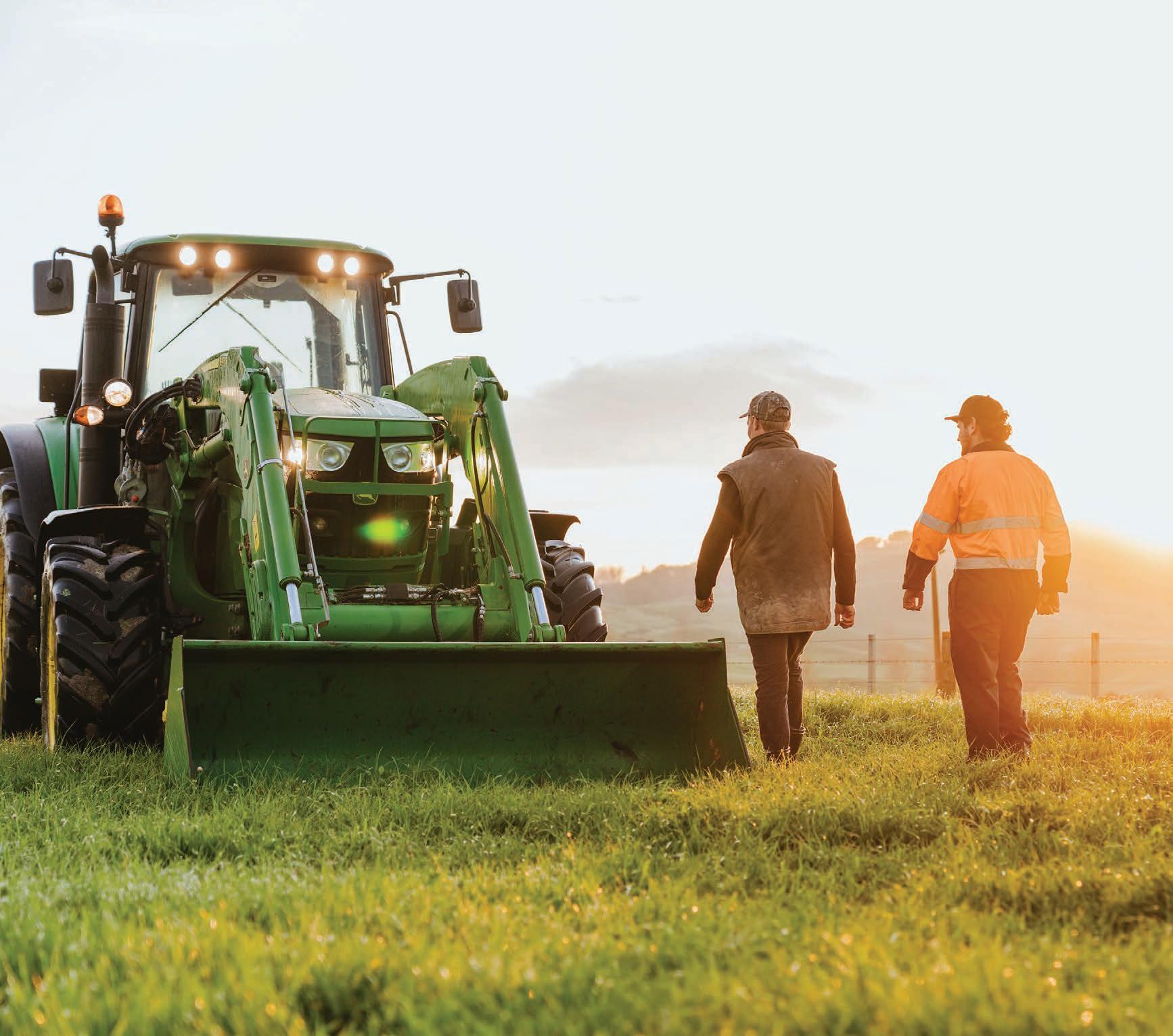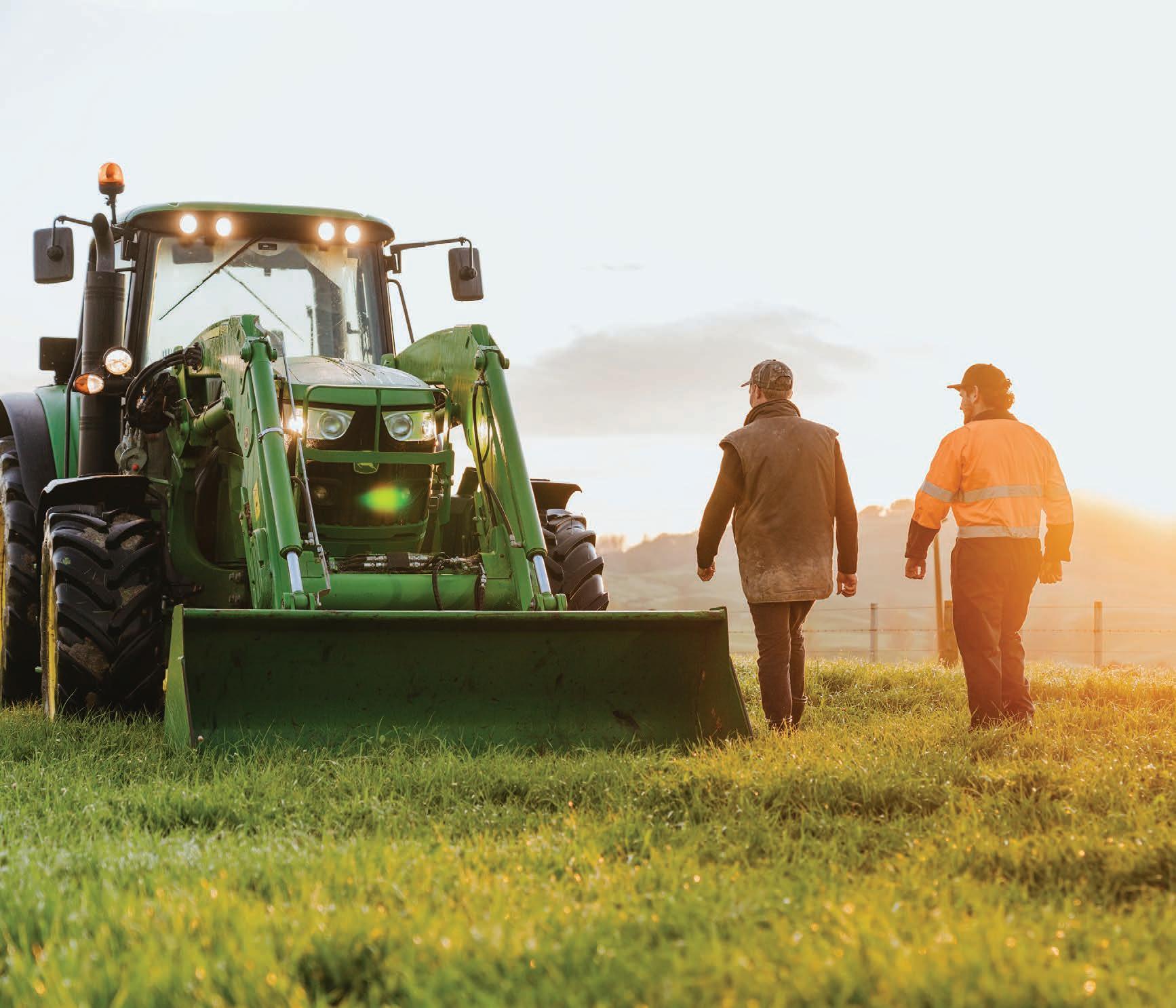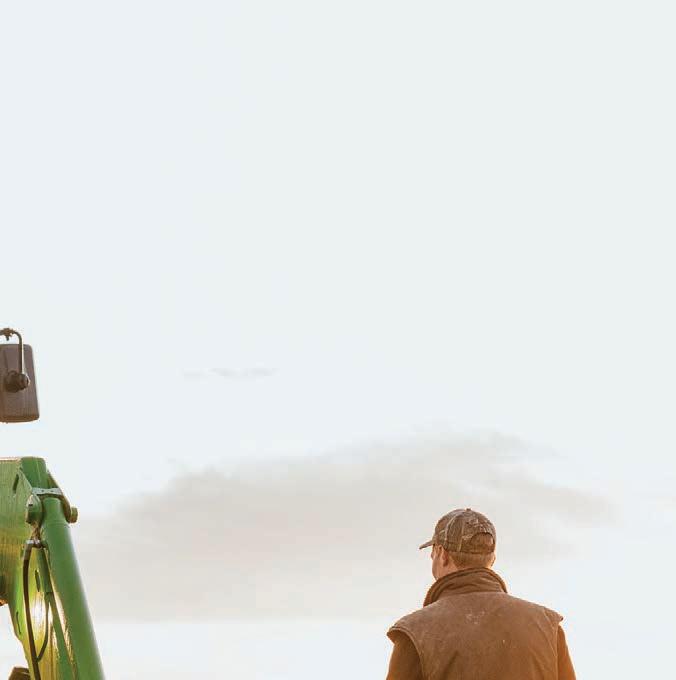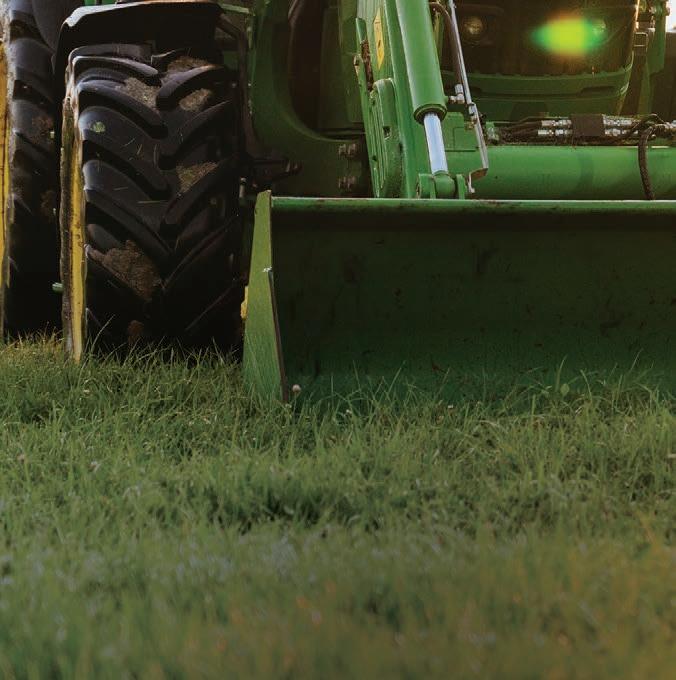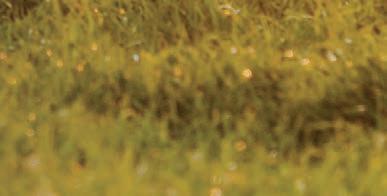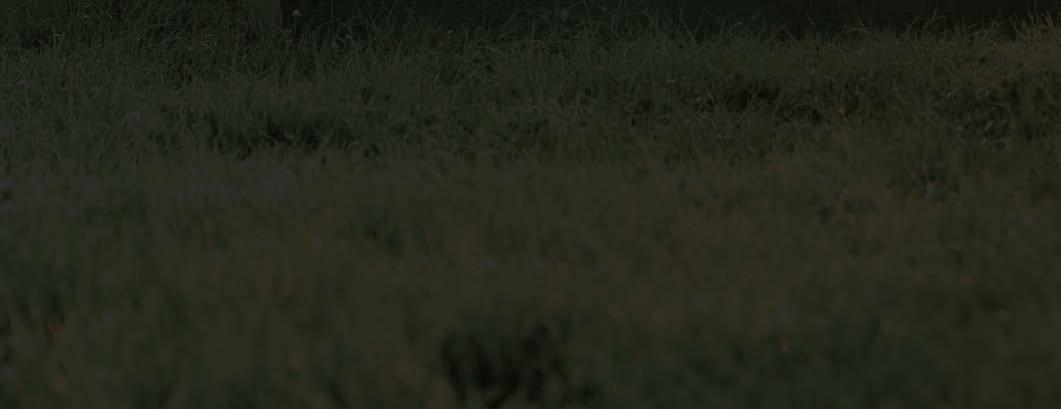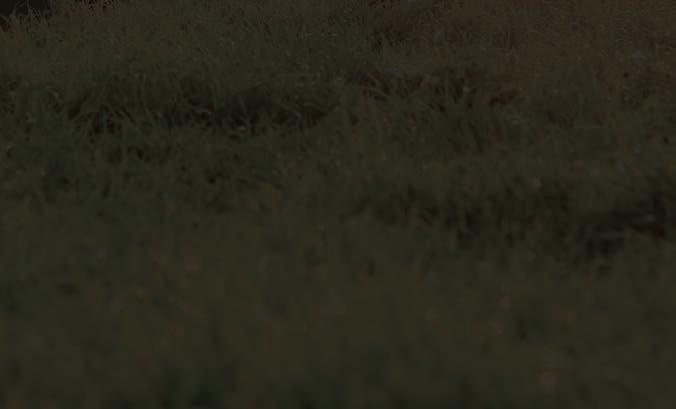Outdoor classroom
Auckland farm a showcase for future generations


PLUS:
Beating adversity
➜ Struggled but now winners
➜ Some changes but same problems
➜ Beating depression


Auckland farm a showcase for future generations


PLUS:
Beating adversity
➜ Struggled but now winners
➜ Some changes but same problems
➜ Beating depression












we believe a successful farmer is a prepared farmer. Monitor every cow on your dairy farm 24/7 with real-time insights into fertility, health, and nutrition. With CowManager, you can focus on the right cow at the right time.





















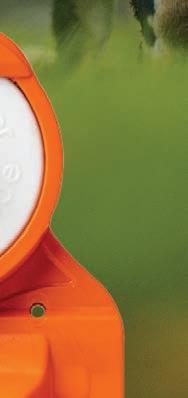

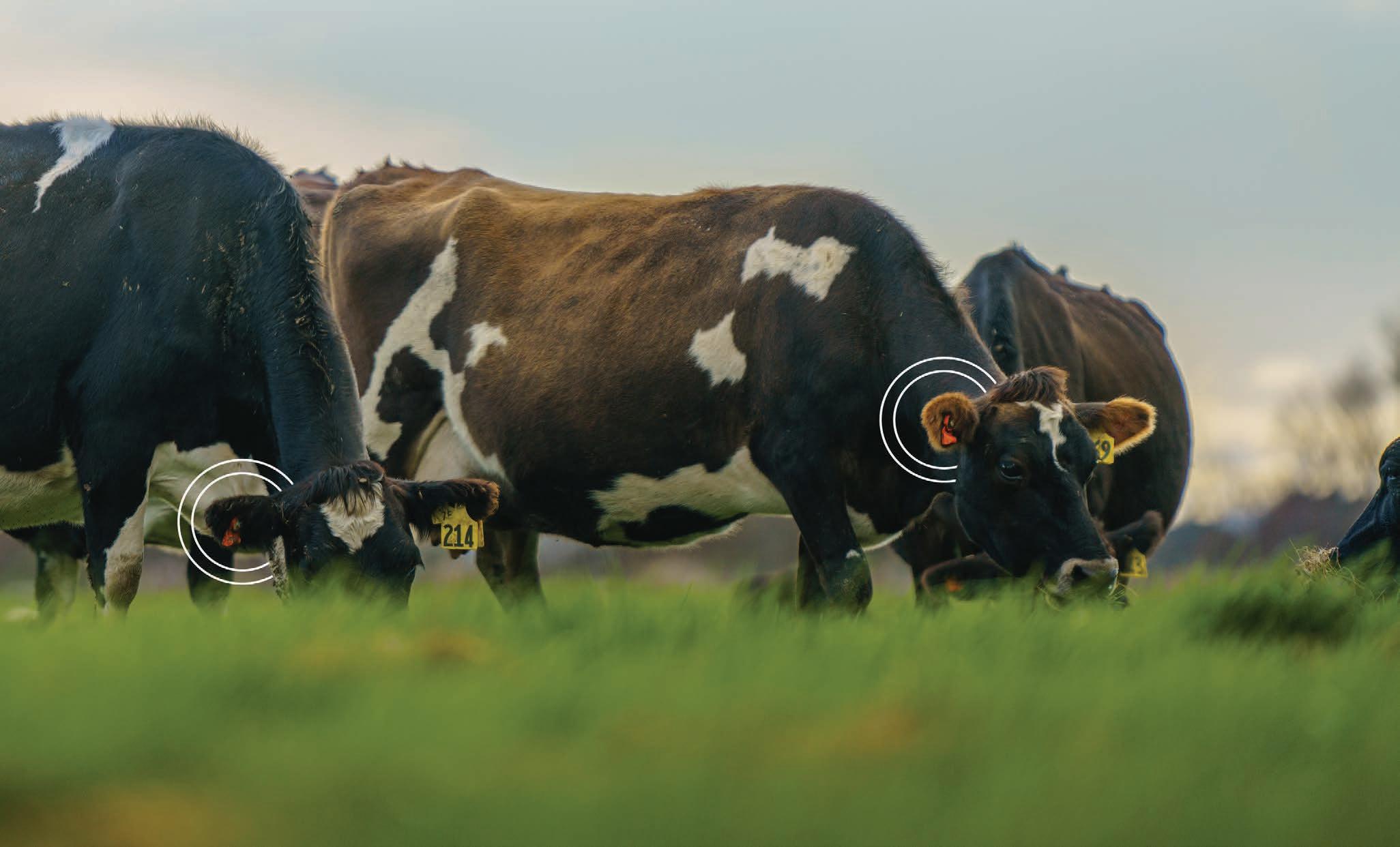
“We nearly paid it o completely in the first 12 months because it saved cows’ lives.
Because of CowManager, I identified that the cows needed more fibre in their diet, so we added dry silage to their diet and their rumination climbed instantly.

When you get to the sixth or seventh week of mating, you’re starting to get a little over it. My concentration starts to wain a little bit, which I’m sure contributes to the empty rate. CowManager doesn’t allow you to do that. It just keeps telling you the cows.”


Waikato/BOP jody.anderson@agrihq.co.nz

















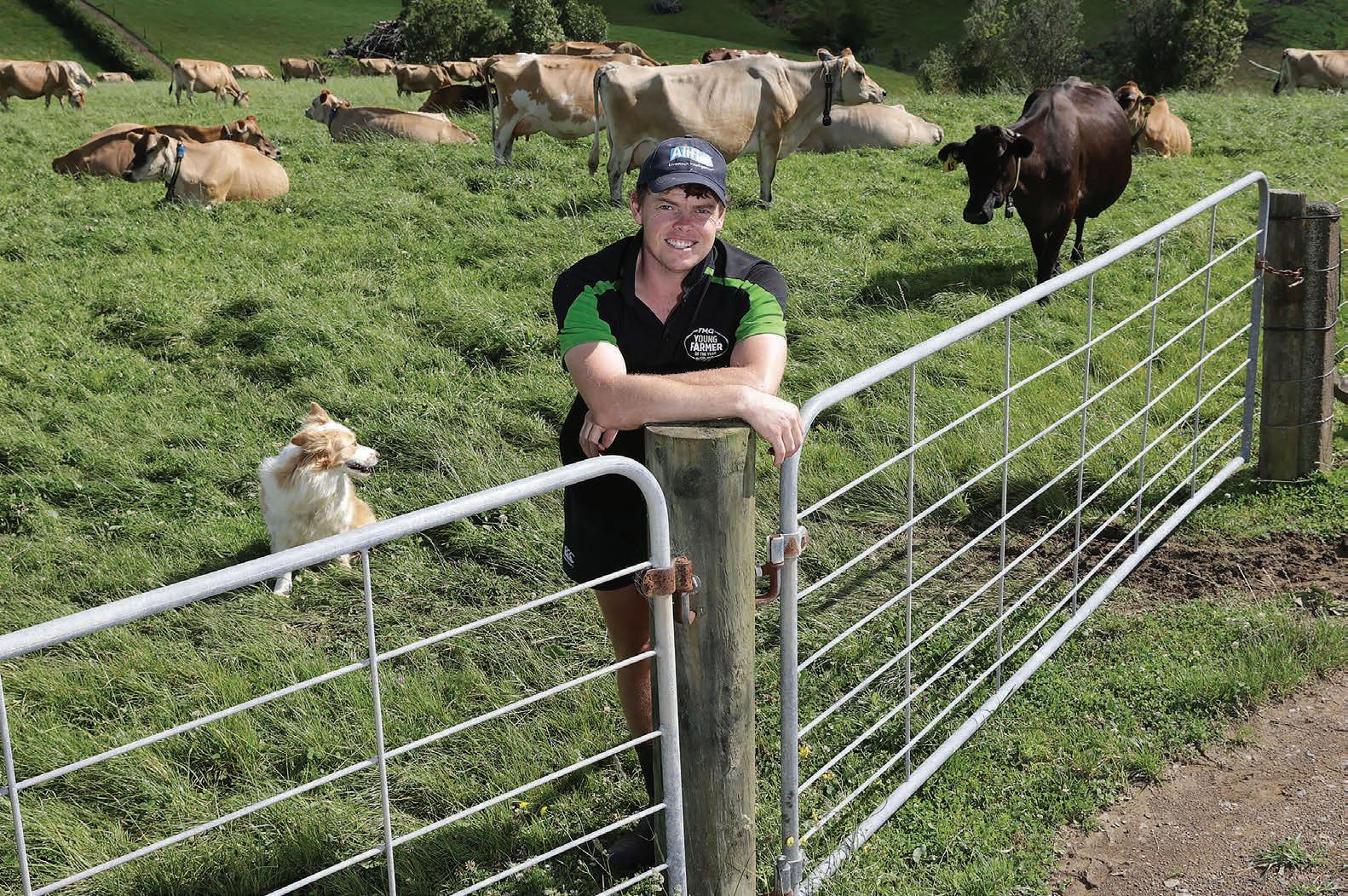


+ Filter by Traits and Breed














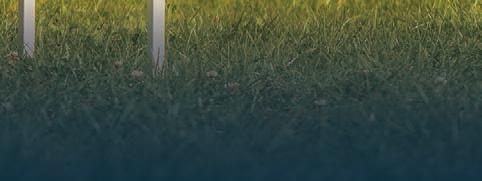
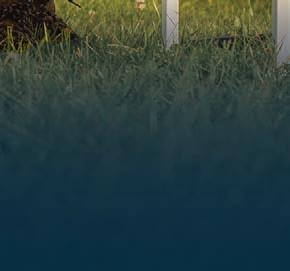










+ Compare Your Favourite Sires











+ Download a Custom Catalogue


With the release of FindABull comes the ability to favourite sires of interest to you and your herd. You can then filter by favourites and come back later to see how the bull is progressing or even download a minature catalogue of your favourite bulls for quick reference. Building your dream team has never been easier.
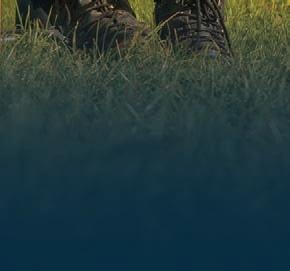


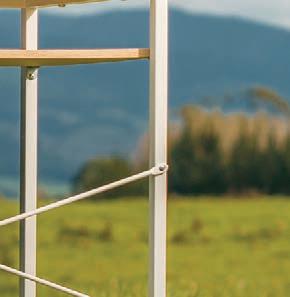
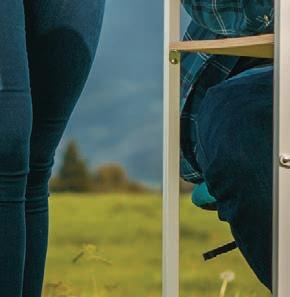



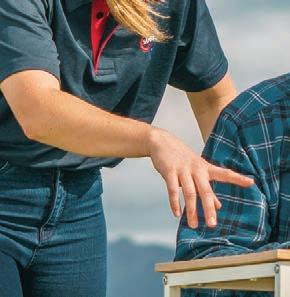


Scan the QR to find your the perfect bulls, findabull.samen.co.nz








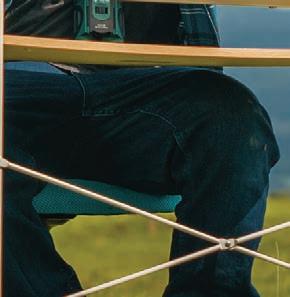

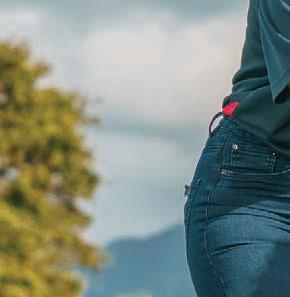


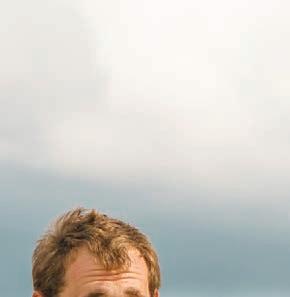
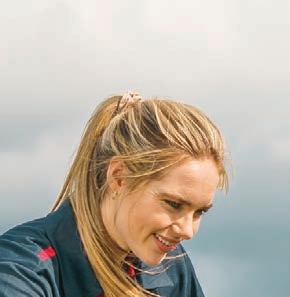






The Federated Farmers president says the change in prime minister and several policies are not going to address the real grassroots issues people are crying out to see fixed.
It has certainly been an interesting start to the year, but our first farm confidence survey of 2023 shows not much has changed around farmers’ confidence in the economy – it’s the lowest since we started the biannual surveys in 2009.
Our new prime minister may be preoccupied with Auckland, and concerns with flood damage are obviously justified, but he should give thought to the provinces as well. Most of the rhetoric has been focused around urban voters.
Now, I’m not some needy attention seeker; quite frankly if the government forgot there were provinces and didn’t pass rules and regulations that affect us, I’d more than happy with that outcome. However, there is a truckload of them already in the pipeline. That is what’s sparking the lack of confidence.




Chris Hipkins talks about focusing on bread and butter issues. Well, if the concern is the cost-of-living crisis, a good starting point would be the locations where that bread and butter originally comes from and the costs being forced on the people that make those staples.
The “bread and butter” reset turned out to be more of a “kick it for touch” reset in my view. Of the five policies announced, only two could be said to affect the cost of living – the biofuels rebate, which would have added to the cost of fuel, and the compulsory employment insurance, which would have taken additional money out of paypackets. The other three – hate speech laws, Three Waters and the TVNZ/RNZ merger – have nothing to do with the cost of living, and are just unpopular.
My take is that these last three and the compulsory employment insurance are just being delayed till after the election –kicking them down the road rather than ditching them.
The other big announcement was increasing the minimum wage, which


in the current climate will do nothing except add costs to production, further fuelling inflation and adding more stress for struggling small businesses.
Going back to our confidence survey: government regulations ranked highly as a concern, and a good example of why business confidence and regulations matter is what we are seeing with the egg shortage. Actions have consequences and in the case of egg producers the actions of the government and then supermarkets destroyed the confidence of a number of egg producers. They perceived that the goal posts would just keep shifting on them, so they stopped investing in their businesses and exited from production.
Emissions taxes came out as a chief concern in the Feds’ survey. Not surprising given the government’s proposal back in October would have seen something like 20% of our sheep and beef industry disappear. While the government may have said it was going to dial that back in December, does the new PM hold that view? What needs to happen is a return to the original principles: that any pricing mechanism would only be there to incentivise the uptake of available mitigations, and would result in lower global emissions, not shifting them offshore. It’s also crucial to get a methane target based on what is the actual warming impact of that gas.
If the cabinet truly wanted to help those who make the bread and butter, it would revisit resource management reform and the proposed 853-page Natural and Built Environment and Spatial Planning acts. Our fear is that in its current form these Resource Management Act replacements won’t improve anything, and in fact will make things worse.
Despite numerous changes, the Essential Freshwater regulations are still riddled with issues, from the lack of approved farm plans requiring farmers to get consents, to the third failed attempt
The year has started off with several changes, but Federated Farmers president Andrew Hoggard says most of these won’t help Kiwi farmers or consumers.



at a low slope map that is still going to require the fencing of water bodies on extensive and remote farms, where the occasional interaction with cattle and creeks has little more impact than if it was wild animals due to the low stocking rate.


Don’t get me started on the proposed changes to the National Environmental Standards for sources of human drinking water, which will force me to get a $10,000 consent to spray weeds within 100m of the edge of the river that runs on our boundary.
These are just a few examples of regulations and legislation that add costs to farm businesses – in fact all businesses – for dubious benefit. Those costs ultimately find their way to the consumer. This is the real bread and butter stuff that needs addressing.
A dairy farm on the outskirts of New Zealand’s largest city is also an outdoor classroom for future generations of farmers.
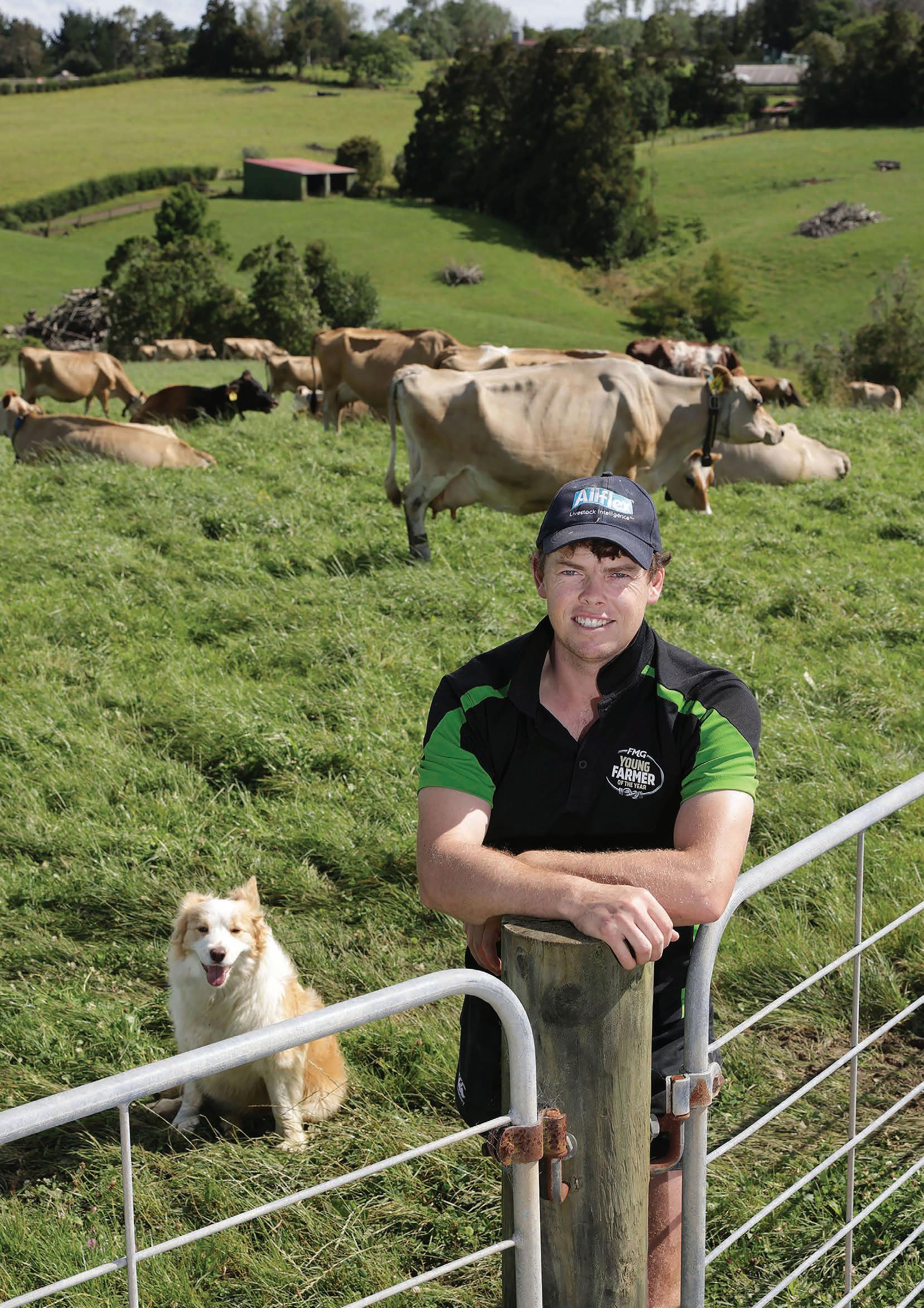
At Donald’s Farm students learn in the field about dairy’s ‘grass to glass’ story as well as how the industry tries to mitigate its environmental footprint.
Running Donald’s Farm on the edge of New Zealand’s largest city allows an Auckland farmer to operate one of the country’s most unusual dairy businesses.
Owned by NZ Young Farmers (NZYF), the 63ha effective farm in Whitford is managed by Sam Waugh. It acts as both a commercial dairy farm and as an educational hub for Auckland schoolchildren to visit in order to learn about the primary sector.
spent most of my time after school in Canterbury. I never thought I would be living, let alone farming, in Auckland. It was never on my radar.
“Farming here has its challenges but it’s quite a unique location where you are just far enough away that you still feel like you are not in the city but we are close enough that it’s very relatable for the urban population when they do come out.”
He has a view of arguably Auckland’s most recognisable landmark out of his living room window.
“It’s quite interesting waking up every day and looking at the Sky Tower as a farmer.”
It’s also given cause for him to reflect on the so-called urban-rural divide between farmers and the urban population.
For Waugh, it means combining conventional day-to-day farming with a de facto teacher’s role.
It’s a challenge he relishes.
“We don’t know of any other farm in New Zealand that’s trying to do what we do. Being so close to the city and being able to work alongside urban schools to bring kids out to a whole other world is quite a unique opportunity,” he says.
It gives him, wife Liana and son Albie an insight into living and operating a dairy farm on Auckland’s fringe that few have.
“I grew up in Manawatū and then
“You don’t know what you don’t know and the people visiting the farm have very rarely had the opportunity to talk to a farmer, let alone come out to a farm.
“Their knowledge isn’t there because they don’t know what they don’t know. Sometimes in the rural sector, we see the divide as a problem. I don’t see it as a divide, it’s a misunderstanding or a lack of knowledge.”
That misunderstanding also goes both ways and he questions whether farmers truly understand the needs of urban populations.
“For me, one of the things I really like
about this job is being able to walk the line between the two and help bridge that understanding and knowledge.”
The 74ha farm has 11ha of retired areas and native bush, milking a 120-cow selfcontained herd of mostly Jersey cows along with a small number of milking shorthorn, a legacy of the late Donald Pearson, the farm’s former owner.
He bequeathed the farm to New
Continued page 10
• Farm owners: New Zealand Young
Farmers
• Manager: Sam Waugh
• Location: Whitford (South Auckland)
• Farm size: 74ha (63ha effective)



• Cows: 120
Jersey/milking
Shorthorn
• Production: 20212022: 36,942kg MS
• Production target: 2022-2023 37,000kg
MS
“It’s quite interesting waking up every day and looking at the Sky Tower as a farmer.”
Sam Waugh
Zealand Young Farmers in 2018.
The generosity of Pearson’s gesture, given the land value of the farm because of its location, is not lost on Waugh.
He says Pearson was approached numerous times over the years by developers who wanted to turn the farm into lifestyle blocks.
“He was adamant that it’s not what he
wanted and it’s very much a strong part of our identity and how we operate.”
Pearson knew that the understanding and knowledge of farming and how food is produced was diminishing within NZ’s urban population. He believed his farm could be used to help turn this trend around.
“It was Donald’s wish that the farm
remain as an operational farm and that it be used to connect communities with farming,” Waugh says.
It’s a commercial farm, but its focus is split between profitability and education, with the farm used as an outdoor classroom for schoolchildren.

“His focus for the farm was connecting communities with farming and that’s what we’re starting to develop,” Waugh says.
“What we would like to do long term is to have around 5000 students a year on the farm and connect with students multiple times during their schooling, from primary into secondary and potentially into tertiary. Currently, our focus is on the primary and secondary age groups.”
He is in his third season running the farm. It is a sole position apart from a relief worker who covers for him on his days off.
After leaving university, Waugh worked as a farm consultant in Canterbury while also sitting on the NZYF national board.
It was during this time that Pearson first began discussions with the organisation around donating his farm.


Stop mastitis before it starts – Protect her with Teatseal® proven as the most effective way to prevent new infections, over the dry period and at calving. Talk to your vet or learn more at teatseal.co.nz



That’s got the Teatseal of approval.

However, for Sam and Liana an OE beckoned and the couple spent the next couple of years in the United Kingdom.
He had kept in touch with the board over the course of his travels and knew about the bequeathal. While on a trip home to NZ for a wedding he was interviewed for the manager’s job.
In the background of all of this was the covid-19 pandemic. Waugh initially turned down the job to travel more, but once the scale of the pandemic became clear, Sam and Liana changed their plans and moved back to NZ.

The position was still open and Sam was hired.
NZYF set up the farm as a not-forprofit entity and as a wholly owned subsidiary with a board of directors chaired by Hauraki Plains farmer Julie Pirie.

Waugh and the board meet bimonthly for a catch-up, and he will speak informally with Pirie about farm matters about once every two weeks.
The day-to-day management is largely left to Waugh.
NZYF undertook development work following the bequeathal. Pearson had kept the farm in immaculate condition, but as he had grown older and unable to complete some of farming’s more physical tasks, areas of the farm had become rundown.
It coincided with tighter regulations around milk temperatures and effluent storage, prompting the NZYF board to

improve the farm’s chiller unit in the dairy shed and upgrade its effluent system with a new lined pond installed in 2019. It has 90 days of storage.
Plans are underway to improve the farm’s raceway so it can handle buses for school visits, and to construct a new building that will act as an educational centre during those visits.
A lot of the older pine and macrocarpa
Continued page 12
“The overall concept of the farm is it to be an outdoor classroom for students of all ages.”
Sam Waugh
trees in the farm’s gullies have been harvested. The land will be re-fenced and riparian planted.
Running through the farm are two tributary waterways that feed into the Papakura stream. Fences alongside these waterways have been replaced with a 5m buffer that will be planted in natives. A 2.8ha block and a 0.5ha block of native bush on the farm have been retired and will be extended over time.
“One of our key goals is around water quality and we would like to make sure it’s at a drinkable state when it leaves the farm,” Waugh says.

It will also be an educational focal point for the school visits.

The herd is milked twice a day through spring before switching to once-a-day in mid-December when the summer dry sets in.



“We have a very heavy clay soil that gets very wet in the winter and when its gets hot in the summer it gets very dry


and it presents some challenges. “The reason for once-a-day is threefold. It protects us if it does get very dry, frees

me up so I can do more maintenance and development work around the farm as well as allowing more time for the educational workload. Over the summer and autumn months we’ll try and do a lot more of our visits.”
To supplement the pasture, around 10ha of chicory is used as a summer feed crop and a small amount of meal is also brought in. Waugh also tries to get at least one cut of baleage through spring to feed out.
The herd is milked twice a day through spring before switching to once-a-day in mid-December when the summer dry sets in. Sam in the milking shed during afternoon milking.

Designed and refined over many years to be reliable, easy to use, gentle on animals and seamlessly integrates with CowManager
Reliable, Robust, Easy.Sam Waugh and wife Liana with son Albie and one of the friendly cows.
“You don’t know what you don’t know and the people visiting the farm have very rarely had the opportunity to talk to a farmer, let alone come out to a farm.”
Sam Waugh
“Chicory is a big tool for us in summer, which helps us extend the round and provide a really high-quality feed over the drier months.”
Waugh says one of his main focuses since becoming manager is pasture renewal.
“In the autumn we’ll re-sow the chicory into new grass and in the last couple of seasons, with that chicory coming out, we have started to get a fair bit of new grass in.
“We have seen some good gains from that and it’s making a big difference in our production.”
Last season the farm produced 36,942kg milk solids and this season is aiming for 37,000kg MS. At this stage, production is slightly ahead of target.

The farm’s soil type and pasture variability are reflected in its low stocking rate and while it can create challenges through spring, it also ensures the herd is well fed and in top condition.
Over winter, he on-off grazes the cows by housing the herd in an open barn to protect the paddocks from pugging during wet periods. He also uses the housing in the summer to get the cows into the shade and prevent overgrazing the paddocks.

The low input focus means the farm operates as a System 1 to 2, depending on the season, with pasture utilisation
being the main focus. If the season does turn dry over summer, he does have options to increase inputs to ensure the
cows maintain condition via in-shed feeding.


He starts drying off the herd in late March-early May, staging it based on cow condition and when the cow is due to calve.
He runs the heifers separately from the older cows so he can show schoolchildren how these younger cows transition from calf to being a milking cow.
Calving starts on July 10 and he keeps 30 replacement calves and approximately 20 bull calves to 100kg, which are then sold at the saleyards.
The herd is also using Allflex collars for the first time as a tool for heat detection and animal health data. Mating begins on October 1 and runs for 10 weeks. He does AI for the first five weeks then the bull is run with the herd for a further five weeks.
However, with the cows now having collars, he may review their mating plan and do AI for the entire 10 weeks.
He uses LIC’s Forward Pack semen on his cows with an emphasis on keeping the herd Jersey-based. The breed is also favoured because it performs well on the farm’s rolling to steep terrain.
Waugh hosted his first large group of
Continued page 14
schoolchildren just before Christmas with students from Manurewa and Papakura high schools visiting.
All of the two schools’ year nine students came to the farm – 70-80 students a day over two weeks.

He says the plan is for the educational programme to dovetail into contextualised learning resources.
“We are wanting to build resources using Donald’s Farm as the context so students will come out to the farm to see what we are doing and learn about farming. Then when they’re back in the classroom they’re using data/information from the farm to base their learning on, helping them to relate to it a lot better.
“They can use farming and use food as the context for their learning and that is definitely a goal we have going forward.”
The students were split into three groups during the visit. One group went on a farm tour to learn the “grass to glass” story of dairy as well as how the industry tries to mitigate its environmental footprint.
Another did practical activities developed by Horticulture NZ and the Arborists Association, teaching the
students about seeds, plant growth, tree climbing and forestry. There was also a session focusing on machinery and how it is used on the farm.
The final part of the day has the students taking part in an exercise where five role models dressed in mufti clothing get asked 10 questions from the students.
primary sector including people from Fonterra, a sheep and beef farmer, forestry, biosecurity and fishery officers, a tree nursery worker and someone from the horse-racing industry, plus many more.
“In total, we had 32 organisations involved over the two weeks from those within the primary industries through to the tertiary education commission.”
Overall, it all went a lot better than he had expected.
“We’ve had a lot of very positive feedback from all people – the role models, the teachers and the students. There was a lot of engagement from the students, a lot more than we were expecting, with Papakura High School reporting higher levels of school attendance the days the students were coming out to the farm.”
That feedback will be used to improve the programme for this year.
Waugh estimates that about 95% of the students had city backgrounds. Around 40% of the Manurewa High School students had been to a farm before, and 50-60% from Papakura High School.
There was a range of farming knowledge among the students. Most, for example, did not realise cows had to be pregnant or have recently given birth to produce milk, he says.
“But that’s what we’re trying to do. Bring that [knowledge] level up among the urban population.”
Sitting alongside the school visits are a small cluster of other educational projects. These include a trades academy and a calf club programme.
Waugh also works with Nature’s Den, a programme that sees 15-20 primary school children visit the farm and base themselves on the farm’s bush block to spend the day on outdoor learning.
“The overall concept of the farm is it to be an outdoor classroom for students of all ages,” he says.
That could one day see students in a science class take topics studied in the classroom outside for practical learning, he says.
The models then leave to get changed into their work clothing and while they are changing, the students have to guess what jobs they do.
Once changed, they explain their jobs to the students.
Waugh says they tried to get a broad spectrum of people from across the
NZYF helped him organise the day along with people from the Tertiary Education Commission and Ministry for Primary Industries.
“The plan long term is we would like to employ someone to be able to free up my time to develop and organise the educational aspect of the farm.”
However, employing that person will require outside funding, which NZYF is looking into. That would also ensure the
“It wasDonald’s wish that the farm remain as an operational farm and that it be used to connect communities with farming.”
Sam Waugh
long-term financial sustainability of the teaching module, he says.
It would also take some pressure off him as he juggles the challenge of both running the farm and co-ordinating the school visits.
Keeping the educational element going will also help maintain the students’ interest.

Too often in the past the primary sector has been enthusiastic about establishing one-off events to get young people onto farms but is not strong on delivering the follow-through, eroding any engagement the event might have established.

Ultimately, Waugh wants Donald’s Farm to break that mould by providing multiple interactions with students.
This will enable them to gain a deeper understanding of the broader primary industries, helping them to better understand how food is grown and highlighting the career opportunities within primary industries.
“We want to make sure we’re in front of mind in their thinking and showcase the primary industries as an exciting career opportunity for them.” n




The essential building blocks for optimal health including vitamin B12 in one convenient injection.

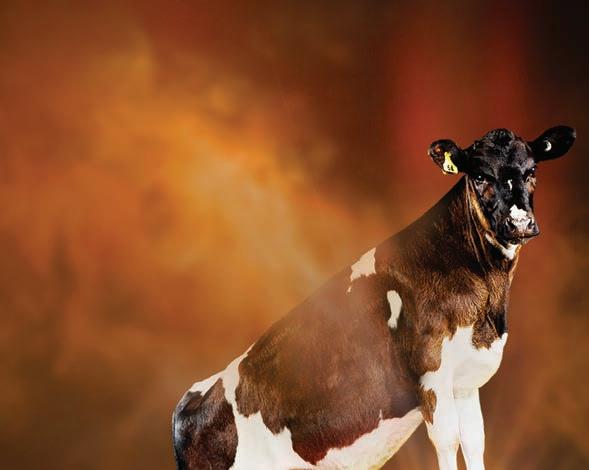

Each month the Milk Monitor delves into the dairy industry and gives us the low-down on the good, the bad, the ugly and everything in between.
Dairy prices have made a decent comeback after four months but whether that momentum remains depends on China.
We finally saw some increases in demand from that market after it lifted its zero-covid policy when the GDT bounced back on February 7 with a 3.2% lift.
It was the largest price index increase since September 6 last year. Whole milk powder lifted 3.8% and butter and AMF jumped 6.6% and 4.8% each.
What the dairy market will be hoping for now is for that momentum to help rebound the Chinese economy following the end of its lockdown.
This along with the global milk supply will have a major effect on whatever the milk price ends up for this season and 2023-2024.
ANZ senior economist Susan Kilsby says in the bank’s latest bi-monthly Agri Focus that how quickly Chinese consumption picks up will be the key factor in dairy demand.
“China is expected to increase its buying volumes as demand for dairy products rebuilds as the economy bounces back from covid-zero. However, it is not clear how long it will take for this to occur as dairy is a luxury good for many Chinese consumers.”
Because of that, consumers will need to feel positive about their financial position before a meaningful impact on demand is seen, she says.
She also expects prices to gradually lift this year with the overall trend to be positive.
Westpac’s Nathan Penny says that products such as butter will benefit most from looser covid restrictions as more consumers can enter food service outlets.
“Indeed, that was the case overnight, with butter posting the largest price rise. Over coming months, we expect prices to gain further momentum as Chinese demand continues to rebound,” he says
in the bank’s Dairy Update.
He forecasts the Chinese economy to grow by 6% from 3.5% in 2022 and says strengthening household spending will be a key driver of economic growth over the year.
Rabobank senior agricultural analyst Emma Higgins cites China’s reopening as one of four wild cards facing the primary sector this year.
“We expect a light recession in China, already kicked off in quarter four 2022, to end in the first quarter of this year. We think the journey might still be a bit bumpy, but there remains a chance that demand could improve earlier than forecast.”
The three other wild cards she identifies in the bank’s Agribusiness Outlook 2023 report are inflation, market signals for low or zero emission products and the upcoming New Zealand election campaign.

These factors have drained sentiment among food producers, highlighted in recent confidence surveys.
“And all of this exists amidst a potent background of climate change urgency, a cost-of living crisis, geopolitical fragmentation and extremely tight labour markets,” she says.
The return of demand from China is of course good news for the milk price forecast with it re-affirming Westpac’s $8.75kg MS for this season. ANZ is more pessimistic, with the bank dropping its forecast by 25 cents to $8.50kg MS, largely due to the weakening NZ dollar.
ASB has the gloomiest outlook. While the auction was a positive for this season’s $8.65/kg MS forecast, looking ahead to next season its forecast sits at $7/kg MS in its Commodities Weekly publication.
Economist Nathaniel Keall acknowledges this is more conservative than recent futures pricing that has forecast it at $8.50-$8.75kg MS, which is where most of the other banks have their new season’s forecasts, too.
“Our view rests on the expectation dairy prices to move lower over the second half of 2023 and early 2024. We are more pessimistic on the outlook for the global economy this year.”
There’s also speculation of recessions among many of the world’s major economies, he says.
He is also cautious about the magnitude of the pick-up in Chinese demand. While that economy will come back this year, forecasters are projecting GDP growth of around 5%, one of the weakest expansions since the 1990s.
The final piece on this playing board is milk supply. Domestically, production has taken a hammering from the disruptive weather this milking season, particularly in the North Island where milk collection is down 4.1% in the season to date, according to Fonterra’s Global Dairy Update for January. That same document has overall production down 3.8% for the 12 months to December.
The impact of Cyclone Gabrielle will only compound all this.
Meanwhile, in the northern hemisphere, supply is expanding both in the United States and Europe.
With farm input costs still high, it could mean the industry could be in for a bumpy ride.
With a burgeoning population approaching 1 billion, the southeast Asian dairy foods market can’t be ignored – but it is often eclipsed in marketing programmes by China, its looming neighbour.
Brent Whelan, global Anchor brand GM for Fonterra, said the southeast Asian market carries some of the characteristics of China, but also cultural variances one would expect across such a diverse range of populous countries that includes Vietnam, Philippines, Malaysia and Singapore.

These variances were firmly in the minds of the Fonterra marketers and product developers who will be launching some new protein-enhanced products in coming months.
“We have got a talented team based in Singapore trying to drive a unified strategy, with local execution,” Whelan said.
The foundation product for those being launched in southeast Asia is Anchor’s “Protein Plus” yoghurt range, familiar to New Zealand shoppers.
“It has performed well in NZ, being a strong brand now and coming from nothing in a short time,” Whelan said.
“We are looking at consumer needs that we can leverage off, especially if we can enhance NZ dairy with ingredients that fit with dairy, to make it a bit more functional.”
Fonterra has identified a lasting energy need for families across southeast Asia, and NZ-sourced protein is a key means to meet that need.
The product is launching in Malaysia and Philippines in a powdered form, requiring only the addition of water to reconstitute. It fits with local consumption behaviour, where consumers are more familiar with mixing up milk as a powder than with purchasing it as a liquid product.
In Malaysia the Protein
Plus yoghurt drink is able to leverage off consumers’ familiarity with the strong and enduring Fernleaf brand, trusted and respected by a couple of generations of consumers.
In the Philippines a Protein-Plus product that includes grains is also due to launch.
Development required the full engagement of Fonterra’s innovation centre in Palmerston North to ensure the grain component could be successfully incorporated into a powdered product suitable for reconstitution.
“The final product is probably best likened to a light porridge, really breakfast in a glass,” Whelan said.
In Thailand individual consumption products in liquid pack form have been a focus, including the Anchor ActifFibre product, recognising consumers’ understanding of the brain-gut health axis that is only now becoming more of a topic among Western consumers.
An accompanying launch is for Anchor Beaute, a liquid product containing zinc and collagen claimed to improve skin complexion and due to be available in 14,000 7-Eleven stores.

Whelan said Fonterra has some solid leverage across southeast Asia based on the long-term presence of legacy brands Anlene through Indonesia and Fernleaf in Malaysia. Anlene’s promotion has recently started using Malaysian actress and past Anlene brand ambassador Michelle Yeoh for a #movewithnolimits campaign, aimed at encouraging a more active lifestyle among older consumers.
The 60-year-old Hollywood actress has
Fonterra has been developing new products for the southeast Asian market, which is growing rapidly.
returned after over a decade’s absence promoting the brand, and Whelan said is the ideal ambassador to represent a healthy product strongly linked to aging actively.
The aging consumer demographic is proving a valuable platform for the Anlene brand, with increasing clinical evidence backing claims about the value of dairy in the diet of over sixties.
With seven out of 10 Malaysian adults susceptible to poor bone health, Anlene is pushing a strong nutritional and longevity message with the campaign urging consumers to be aware of calcium needs as they age.
Whelan said the brand also provides a good platform for Anchor’s other dairy food products in the southeast Asian region.
“There is a good portfolio of brands there too, including Mainland and Perfect Italiano mozzarella and parmesan products.
“Much of the [southeast Asian] region has huge swathes of consumers moving into the middle class, and this is giving us a lot of hope we can grow even further in the region.”
Cows young and old upset expectations for their classes to emerge as champions at the 2023 New Zealand Dairy Event
It was a year of firsts at the 2023 New Zealand Dairy Event, with both an Ayrshire and an Intermediate Champion winning Supreme Champion of All Breeds.
Held at Manfield Park, Fielding, from January 24-26, the event saw secondcalved three-year-old Raetea Rubicom Debbie take the Grand Champion Ayrshire and then Supreme Champion All Breeds titles.
It was the first time an Intermediate Ayrshire Champion had won Supreme Champion at the NZDE and only the second time an Intermediate of any breed had won Supreme Champion –and it happened just one week after a similar feat in Australia at International Dairy Week.
Debbie, owned by 25-year-old Joanna Fowlie of Matamata, beat 2021 NZDE Supreme Champion Pukekaraka Elle Delila (exhibited by the Gilbert family, Ashburton) in the Ayrshire ring after being judged by World Ayrshire Federation President Edmund Els, moving forward to the All Breeds competition to compete against the
Holstein, Jersey and Combined Breeds Champions – all senior cows.
The All Breeds judges were Els, Daniel Bacon (Jersey, Australia), Ben Govett (Combined judge, Australia), Mark Nutsford (Holstein Friesian judge, UK) and Gordon Fullerton (Youth Show judge, Waikato).
Debbie cost her owners $850 as a calf in 2019, after she was passed in at the Waikato Next Generation sale.
Fowlie credited Spanish cattle fitter Alberto Medina with having a big role to play in helping finish Debbie’s preparation.
“I don’t think we would have got her to the standard he did,” Fowlie said.
“Usually, I would have been stressing when all this happened but there was no stress at all through the day, even though it was a massive day of judging and we had to hold her from the Intermediate Championship through to the end of the show.”
Allandale Rubi Burleigh (Horn Genetics) finished Reserve Intermediate Champion.
“The Ayrshires are my breeding, so that was pretty special to do well with her,” Letitia Horn said. “Dad has always said to breed for production and the show cows will come along. I think that’s true.”
In the Combined Breeds class, Brown Swiss cow Rokella Dynamite Bella-ET –owned by Rachel Stewart of Canterbury – was sashed Senior Champion, Best Senior Udder and Grand Champion of the Combined Breeds.
Her attendance involved 14 hours of trucking one way – which included crossing the Cook Strait – but the fouryear-old impressed the judge enough to make the journey worth it.

“Usually, I would have been stressing when all this happened but there was no stress at all through the day, even though it was a massive day of judging.”
Joanna Fowlie
“She did what I hoped she was capable of,” Stewart said.
“I wasn’t expecting to win, but I really wanted to see where she fitted nationally. It was definitely worth the trip, the expense, and the stress of it all.”
In the Jersey class, Ferdon Genetics of Otorohanga secured Premier Exhibitor after winning Intermediate Champion and Best Intermediate Udder with Ferdon TFern Sharee, Reserve Intermediate Champion with Ferdon Bstone Venice, and Reserve Champion Senior Cow with Ferdon Bstone ViennaET.
Horn Genetics took Grand Champion Jersey Cow with Kuku Tbone Leila; Honourable Mention, Best Udder and Best Supreme Udder with Kuku Van Gemmah; and Honourable Mention Intermediate Cow with Ypres Chrome Alice.
Letitia Horn and her father, Peter, made the decision to break in eightyear-old Leila after she calved with her seventh calf last spring.
Sired by Richies Jace Tbone, Letitia said Leila had been close to getting a NZDE start for a number of years, but she had always been trumped by her herd mates. This year, there was no denying her form and in her first show she gave her owners their first NZDE Grand Champion Jersey title.
“She’s an eight-year-old TBone cow that is bloody friendly and stubborn, so she was not the easiest to participate with,” Horn said.
“It was her way or the highway, so we had to use lots of meal to train her.
“Out in the ring she just looked like the proudest old cow, and I was so proud of how well she did, given she’d just been broken in a few months before. It was a very emotional moment to watch her win, because we saw something special in her.”
In the Holstein Friesian class, Waipiri Holsteins of Waikato secured Premier Exhibitor in the class after winning four of the nine titles on offer for the breed.
David Fullerton said it was a satisfying campaign with Waipiri Mogul Kristy EX – who they own in partnership with Andrew Dreadon – winning the Senior Holstein Championship and the All Breeds five- and six-year-old in-milk championship.

Kristy won Best Udder at the 2021 NZDE, and this show season she has won Supreme Champion at Stratford and Senior Holstein Champion and Senior All Breeds Champion at the Waikato Show.
She was also the 2021 Semex On-Farm four-year-old Champion.
“She’s been there or abouts her whole life,” Fullerton said.
“We only take her to the main shows, so she’s always up against pretty stiff competition.” They were also happy to see two of their Lindenright Moovin daughters finish Reserve and Honourable Mention Junior Champion to another Lindenright Moovin daughter in that group (owned by Hannah Lawson, of Woodville), who won Junior Holstein Champion.
Waipiri was also on the ownership papers of the Intermediate Holstein Champion with Andrew Dreadon, which had been bred by Tahora Farms, from Canterbury.
Fullerton said it was great to see international judges and cattle fitters back in the mix.
“For me, that makes the show,” he said.
“I suppose I’ve always been working that way around the world so without the internationals it hadn’t been as interesting for me. To have everyone back and moving around a bit was great.”
Horn Genetics also ticked a box in the Holstein ring, winning Reserve Senior Holstein Champion with Okawa Mogul Lexa.
NZDE committee chair Jamie Cunninghame said it was gratifying to have so many entries this year, and to see the livestream attract 2,200 visitors online.
“It was a massive success from our perspective,” Cunninghame said. “This was the best sponsorship we’ve had for a few years, and they were really positive about it.”
He was quick to applaud the inclusion of the internationals and the strength of the youth show.
“The international judges and fitters give the show a different flavour, and the learnings people take from that are massive. It’s also about the connections for all those young people to open doors to International Dairy Week and further afield. We also had an international photographer this year and that made the coverage next level.
“The Youth Show has always been good. But it’s gone from strength to strength in recent years with numbers.”
“I wasn’t expecting to win, but I really wanted to see where she fitted nationally. It was definitely worth the trip, the expense, and the stress of it all.”
Rachel Stewart
A Taranaki couple experienced some tough times but overcame them to become award-winning farmers.

Murray and Rachel Perks, along with their children Callum, 9, Matilda, 6, and Jack, 3, are in their first season as 50:50 sharemilkers for Murray’s uncles and aunt in the Abbott Trust Partnership, milking 325 crossbreed cows on the 94ha effective Kaponga in central Taranaki.
Murray had always wanted to win Taranaki Dairy Industry Awards (NZDIA) Share Farmer of the Year and last year he realised that dream. The couple won seven merit awards on the night and he remembers thinking that he shouldn’t count his chickens because it’s possible to win a number of merit awards and not the main award.
For the couple, winning meant recognition of their farming practices as well as an acknowledgment of the people who had helped them through some tumultuous times.
And at the Nationals, their winning ways continued. The icing on the cake was a third placing at the 2022 National Dairy Industry Awards Share Farmer of the Year, as well as winning two merit awards.
“It was really exciting to be recognised for what we’re doing and our passion for the industry. We’d hoped to get one merit award at the Nationals. We were
absolutely thrilled to come away with two and a third placing,” Rachel says.
They first entered the NZDIA in their first year at the Opunake farm. When Murray worked for DairyNZ he was given advice that if they were considering entering the awards, they should do it in their first year of sharemilking. Even though they were unlikely to win, they would learn a great deal – and that is exactly what occurred.
“When we’d been back in Taranaki a few seasons, it seemed like all our ducks were starting to line up. One morning I was milking and thought ‘We should enter again.’
“I entered us during milking and went home and told Rachel that we were in the awards. I was in the mindset of going hard or go home.”
Rachel says: “The biggest benefit was the connections we made within the industry. The National awards experience was amazing. It was so positive meeting so many like-minded people who all want to do their best within the dairy industry.
“We started a chat group to share our farm experiences with those people and it’s been a great support. Every region is so different and it’s been really interesting learning about other people’s farm systems.”
• Farm owners: Abbott Trust Partnership
• 50-50 sharemilkers: Murray and Rachel Perks
• Location: Kaponga, Taranaki
• Farm size: 96 hectare (94 ha effective)
• Cows: 325 Crossbred
• Production target: 2022-2023: 126,000kg MS
The high calibre of the regional winners has meant that if they’ve had big strategic questions, they’ve been able to put it out to the people in the chat group and get their opinions and recommendations.
Entering the awards forces entrants to examine every aspect of their business. A thorough presentation requires a “microscope” to be put on every aspect of their farm operation.
“I received some training from our accountant using some of the voucher money from the Taranaki awards to investigate hedging options,” Murray says.
“We ended up taking a hedging option for this season and set half of our milk production at $9.00. With the way things have gone, we don’t regret it. Things like that have helped set us up very well for our first season of 50-50 sharemilking.”

And after their early setback, they needed this security.
Murray was brought up around dairy farming and had always wanted to become a dairy farmer. The couple met at university in Christchurch, where
Continued page 22
Rachel was studying for a Bachelor of Speech and Language Therapy at the University of Canterbury and Murray for a Bachelor of Agricultural Science at Lincoln University.
He finished university a year before Rachel and moved to Hamilton to work as a DairyNZ consulting officer. Rachel followed a year later and worked as a fulltime speech therapist.
After completing his six-month graduate placement he gained another
placement at Patetonga on the Hauraki Plains where he became involved in NZ Young Farmers.
“There were a lot of very good young sharemilkers in the region. It helped me decide that we should have a crack at dairy farming while we were young,” Murray says.
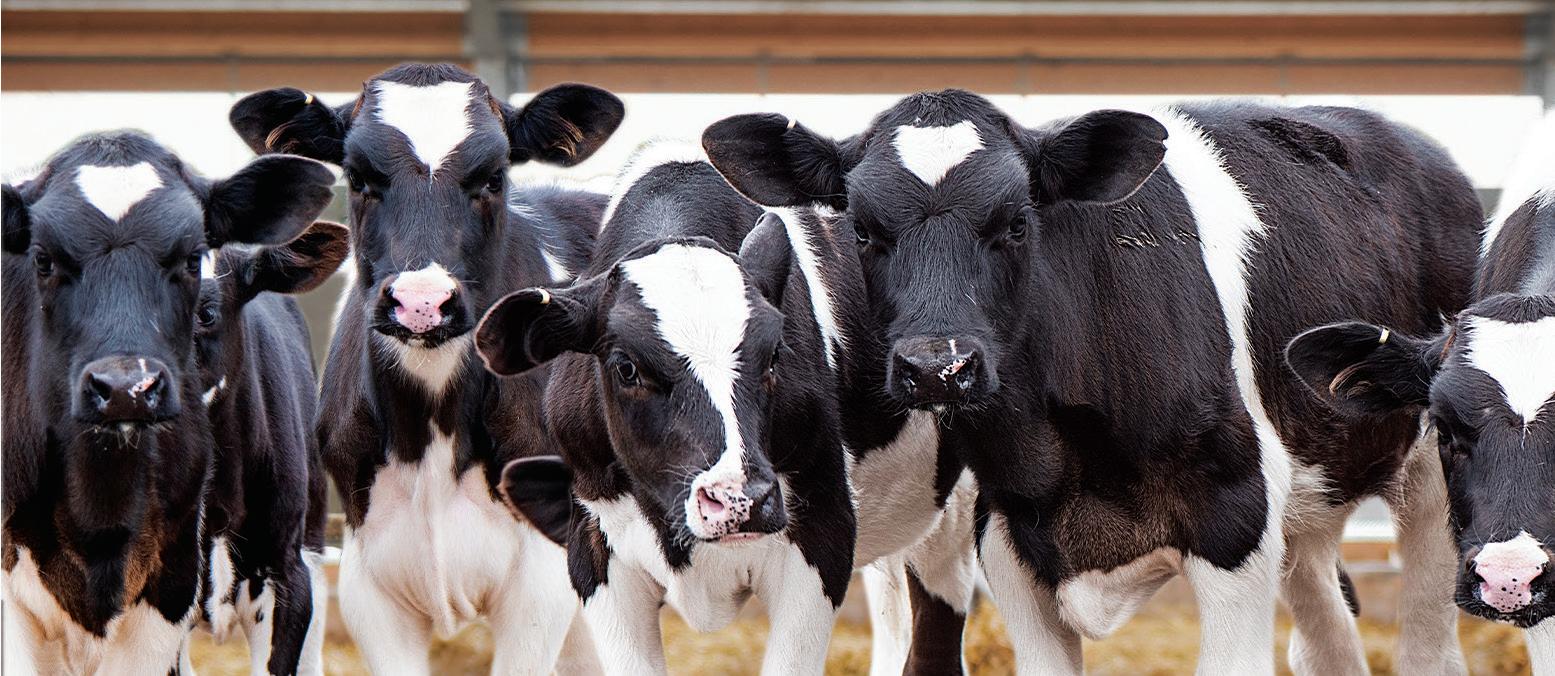
Rachel grew up on a Taumaranui, King Country, sheep and beef farm and had spent her university summer holidays working on a local dairy farm.
In 2012 the couple took on a variable order sharemilking position on a 90ha Opunake farm in coastal Taranaki, where they milked 350 cows for two seasons.

They began searching for 50-50 jobs, but had difficulty finding opportunities in Taranaki because they’d only been farming for two years. Then an equity partnership opportunity came up for them in Hokitika. The payout was $7.90 and things looked rosy, so after taking advice they accepted the job.
But “everything had tanked by the time we got there, and we ended up having to sell out at a loss, and return to Taranaki”, Murray says.
“Initially, I coped quite badly with the situation. When we were right in the depths of it, I remember saying to Rachel’s mum that I would be 40 before getting back to square one. It looked really bad when you projected it out,” Murray says.
“After returning to Taranaki and getting into a decent contract, it didn’t take as long to recover as we’d initially thought. It probably seemed worse than it really was when we were right in the heart of it.”
Rachel says even though it can seem a hard thing to do at the time, you must reach out and admit that things aren’t looking good. It’s important to connect with friends and family to seek help if needed.
Murray and Rachel Perks have faced some tumultuous times in farming but have overcome them to become award-winning farmers. Murry and Rachel with their herd.“It was really exciting to be recognised for what we’re doing and our passion for the industry.”
Rachel Perks
“You kick yourself for missing all the red flags that should’ve been noticed. When the cards are down, that’s when your real friends come through for you. My best mate flew down to help us load the truck. And he got me into Young Farmers in Taranaki which put me in the environment that I needed at the time,” Murray says.
He describes a farm as sometimes being a goldfish bowl. During busy periods farmers are often on the farm for weeks on end. Sometimes when he takes the short drive to Kaponga it dawns on him that it’s been a long time since he’s been off the farm.



“We were pretty isolated at Hokitika because Callum hadn’t started school, so we didn’t have many community connections. There was nothing wrong with the region. It was just due to the situation we were facing at the time, and because we hadn’t been in the region for long,” Rachel says.
“When we returned to Taranaki, we were able to regain the mental health wellbeing aspects that we’d lost and reconnect with the community again.”
Murray says their experience taught him how to manage adversity. That experience helped them when their son Jack was born at 29 weeks, and they needed to spend 97 days in hospital.
“I remember ringing my aunty to tell her that Rachel’s water had broken and she asked me how I could be so calm. But I’d learnt to be,” Murray says.
Rachel now works as a behaviour specialist at Explore Specialist Advice. This allows her to work part time and relieve on the farm when needed.

“I work with adults and children with intellectual disabilities and autism. They’re challenging behaviours, so it’s an
Continued page 24
interesting role. It’s very different to what I do on the farm and gives me variety,” Rachel says.
“I meet people from a variety of backgrounds and many of them are very interested to learn about the dairy industry. It’s nice to be a positive advocate for the industry.”
Prior to taking on the 50-50 role, they spent six years as variable order sharemilkers milking on one of the other Abbot family farms.
This is their first year on the 94ha System 3 farm at Kaponga and they are still learning the property.

The farm utilises 17.5ha of a 50ha support block that is divided between three family farms. They have one fulltime staff member and employ a parttimer for eight weeks during spring.
“This year we’re being conservative and targeting 126,000kgs MS, which is about 1,300kg MS per ha, and around 390kg MS per cow. Last year was the
farm’s second-best season and we’re very close to that at the moment,” Murray says.
The farm utilises Protrack and ACR and he prefers to use basic tech such as GPS mapping for tracking pasture rates and MINDA LIVE for their feed wedges.
Due to the recent rain, they’re utilising 40-day rounds. They usually use a 30day round, but want to keep some feed ahead of the herd. Once autumn arrives they typically push out to a 40-50 day round.
This year they tried something a little different. After the last of the rain they pushed the round out rather than making silage.
“I knew the pasture had already gone to seed, so we weren’t going to lose quality. It’d been a costly season, because we never really had a spring flush. It was very wet and the grass didn’t grow. We fed all of our grass silage, and began feeding maize silage and PKE, which we never do in spring,” Murray says.
“We decided that when grass growth started and we had a chance to be all grass, I’d make it last as long as possible to save money. Otherwise we’d have to make silage. It seemed to work and tied

“This season was weird. When the grass was meant to be growing at the start of October, I was wondering where our silage was going to come from. We ended up going against the textbook a bit”
Murray Perks
us over, so we didn’t have to feed out until the late January rain arrived. We may have lost a little production, but we didn’t have to make silage or buy feed.”
Five hectares of maize is grown at the support block and they buy in extra maize, hay and some PKE. Grass is harvested from the support block for pit silage. On the milking platform, if the grass is too long they make pit and baled silage.
“This season was weird. When the grass was meant to be growing at the start of October, I was wondering where our silage was going to come from. We ended up going against the textbook a bit by feeding extra PKE to generate a false surplus,” Murray says.

“Our thinking was that because we don’t have a feedpad, we needed to make grass silage for winter because we can’t feed PKE. It did irk me a bit, but it’s just what we had to do and it’s the first time we’ve ever had to do it.”
They use the old-school method and oral-drench the herd during milking, which has reduced the number of down cows. Drenching guarantees the cows receive the correct dosage.

“I can quickly drench the colostrum cows twice daily. It’s extra work, but I feel it’s more effective than pasture dusting. You spend more time in the shed drenching, but you’re not spending time on downed cows, and I’d rather it that way,” he says.
“You also get to check each cow daily. We haven’t started using zinc yet. But because the zinc goes down the throat rather than in the water, we get better overall coverage.”
Continued page 26
We were introduced to Animate at the beginning of the season and what a game changer it has been for us. We had a total of six down cows for the entire calving, something we can only put down to Animate.
It was easy to use, the cows loved it, was a massive time saver and there is nothing better than seeing your cows happy and healthy.
Sarah Woodley, 420 cows, Clandeboye, South Canterbury.
I honestly couldn’t rate this product high enough, both dad and I would recommend it to anyone!
Calving begins July 20 and is finished by the first week of September. Murray says that it’s a good timeframe for


setting up labour, because they have a part-time employee for eight weeks over spring so they’re able to get the hard


work done quite quickly with that extra labour unit.
Calves are collected twice daily. They began doing this to protect cow health after having a bad run of mastitis. By collecting the calves twice daily the cow comes in for milking sooner, which prevents their udder becoming swollen. It also means that the calves get gold colostrum sooner.
“The replacement calves receive two tubed feeds of gold colostrum. Our fulltime employee feeds the calves and I help out where needed. We feed warm colostrum and milk through a calfeteria and when that runs out we switch to vat milk,” Rachel says.

They have access to hay and meal from day one and are weaned at 80kg. After weaning, the calves stay on the farm for a couple of weeks before going to the support block.
They remain there until May before going to grazing at Tarata in east Taranaki and come home as in-calf heifers. They are mated with Jersey bulls about two weeks before the main herd. This year they pushed the start of mating back five days to October 22 and
they use AI for all matings. The first five and a half weeks is used to get 80-90 replacements, before 10 days of short gestation Herefords as a marker. The remainder are finished off with shortgestation dairy bulls to achieve an 11-andhalf-week calving period.
They mostly use the genomic team of bulls and some daughter-proven bulls. They haven’t really delved down into individual bull selection yet, but it’s something they’re looking to in the future.
“Typically we have a 77-80% sixweek in-calf rate. Our in-calf rate has been quite variable. When we went solely AI our in-calf rate was 87% and the following year it was 82%. We then started using teaser bulls, which helped a lot,” Murray says.
“Our cows are in the 475kg range. Some of our best cows have a shorter stature and a ginger hue. They don’t look anything spectacular, but are our most efficient cows. They’re the ones that just chug along working hard for you. I’d probably prefer a line like that,” Murray says. A new effluent system was installed
last autumn to replace the three-pond system and land-based application system.

The effluent is pumped from the first pond and the remaining two ponds will be emptied and disestablished. A travelling irrigator is set up to run on night power and covers approximately 33% of the farm.
“It’s amazing how much difference the effluent makes to the soil’s moisture and nutrient levels. We had some paddocks that hadn’t grown well and we targeted them with effluent which made a big difference to their pasture growth,” Murray says.


After returning from the West Coast they’ve ensured that they make time to relax and unwind. Each summer for the past five years they’ve gone camping with their kids and they always plan a winter break.
“I play hockey in winter and have started playing indoor soccer during summer. I enjoy the governance side of farming and have become involved in DairyNZ’s Dairy Environment Leaders programme and helped start Taranaki Catchment Communities,” Murray says.
Rachel likes the fact that their children are being brought up on a farm and will have a similar upbringing to her own.
“Farm life teaches kids life skills that they can’t learn anywhere else. They discover where their food comes from and learn empathy towards animals,” Rachel says.
“I’m president of our local playcentre and try to leave Thursdays free for that. I focus on trying to keep myself active and am about to compete in the Spirited Women All Women’s Adventure Race, which will be my second adventure race.”
The couple would like to build towards farm ownership, but in the short term paying off the herd and giving their children a good education are their priorities.
“Sometimes when you’re milking you catch yourself thinking ‘These cows are actually ours.’ We’re fortunate to be working for family because we have job security and know that we won’t have to look for a job every three years,” Murray says. n

“There were a lot of very good young sharemilkers in the region. It helped me decide that we should have a crack at dairy farming while we were young.”
Murray PerksMurray gets some assistance from Matilda and Callum to take down a break fence.

Cruising down the raceway, looking across lush green paddocks, Winston Mason knew he was a long way from the bustling motorways of Auckland, but it was that first summer in 2003 on a Taranaki dairy farm that he discovered his love for dairy cows and an obsession with treating and preventing lameness.
He was studying through Massey University to become a veterinarian and the summer placement made a huge impact on his career path. Until then he had only considered working with cats and dogs, but the city kid quickly changed his tune once he discovered the challenges caused by lameness.
“I got to see first-hand the problems lameness causes for the cow and the farmer and from then I wanted to find ways to help,” Mason says.
“It’s definitely a passion but there’s also frustration because I think as an industry we have been great at treating lameness but there are a lot of opportunities to help farmers prevent it in the first place.”
Each summer he went back to that farm in Taranaki and used vet clinics around the region for his clinical placement because of the abundance of dairy cows – and because it was home to the lameness expert, Neil Chesterton.

“It was great to be close to the lameness guru, his passion for lameness treatment and prevention is infectious,” Mason says.
“Nobody else would want to deal with lame cows on a Friday afternoon but Neil never hesitated and I think that’s the key to being able to make a difference in any role, enjoying the challenge of the unlikeable parts and finding something interesting and getting good at it.”
He enjoys the challenge of dealing with lame cows. Rather than seeing 20 cows that need treating, it makes him
wonder what could be causing it and what could help reduce lameness within the herd. He loves problem-solving and has spent a good chunk of his career dedicated to it.
Midway through 2022, he and two other epidemiologists, Emma Cuttance and Greg Chambers, set up their own research company, EpiVets, with the ethos of doing research that genuinely helps farmers.
“It can be quite easy to do research for the sake of doing research sometimes but we want to ensure we are developing practical outcomes,” he says.
“We want to push further with the ‘so what?’ when we do research and then extend it with the intention of making improvements to the industry.”
EpiVets provides epidemiology and research services for its customers, including research advice and conducting clinical trials across New Zealand.
It predominantly works with dairy
Winston Mason grew up in the big city but during a placement for his vet studies he discovered a passion for cows and in particular, lameness. He and two colleagues have set up their own research company, EpiVets.
cows and calves but has been performing research across a range of livestock. The stakeholders are farmers but its customers are farm service providers such as pharmaceutical companies, levy bodies and milk processors.
“Most of the time we tend to look at disease prevalence type scenarios, exploring how much disease is out there, what the risk factors are and what we can do to improve it,” Mason says.
“We’re really proud of what we have achieved and it’s been a fun challenge transitioning out on our own.”
Before EpiVets, Mason and Cuttance helped establish the research arm of VetEnt. It was a slow process, starting in 2015, and Mason initially spent one day of the week doing research and the rest as a clinical vet based out of Ōtorohanga. Towards 2019 the work built to three days of research and two days of clinical until there was enough to go into research full time.

“My job was everything farm vets do, from sick animals to herd health plans, and I really enjoyed it but getting into that research space made it really clear that was what I wanted to do.
“And stepping out on our own has
been a good transition. It was the right time for me in my career.”

He is also most of the way through a PhD, where he is broadly covering lameness. He started by defining the lameness problem in NZ.

“I’ve been working with a bunch of farms across New Zealand, doing a lot of lameness scoring and looking at how long cows are lame for and if they’re treated appropriately, how quickly can they get back into the herd.
“The crux of it is early identification, to



help cows recover quickly.”
He has also spent time exploring whether heifers can be managed and manipulated prior to calving to reduce their risk of lameness.
“I quite enjoyed the study, it was a practical piece of research and nothing like it had been done anywhere before.
“Unfortunately we didn’t get the results we wanted to get, but that’s research for you.
Continued page 30
“From seeing a lot of farming systems I truly believe we are as efficient and good as anywhere in the world here in New Zealand.”
Winston Mason
“But we did find a few things farmers can do for heifers before and after calving that will reduce their lameness risk once they enter the herd, and potentially reduce their lameness risk right throughout their life, that’s one of the things I am looking at next.”
How to share messaging with farmers is always top of mind when he is doing any research.
“It’s another passion of mine, always looking at how we can share information with farmers.
“We can often be guilty of ‘telling’ farmers what to do but we need to understand what their barriers are, like what is stopping them from controlling lameness.
“I want to find ways to work with farmers to
find solutions, considering what is within the realms of possibility.”
Before getting into research, Mason spent a number of years working as a clinical vet. His first role after university was as a mixed vet in Whangarei with Northland Vet Group, with the majority of his work with dairy cows. He enjoyed the lifestyle, especially being close to home, but after two years he moved back to Palmerston North to get stuck into a master’s programme in epidemiology at Massey.
He continued working in practice throughout his master’s programme, which included a year in Massey Farm Services –this time as a teacher compared to when he spent time in the clinic as a vet student himself.
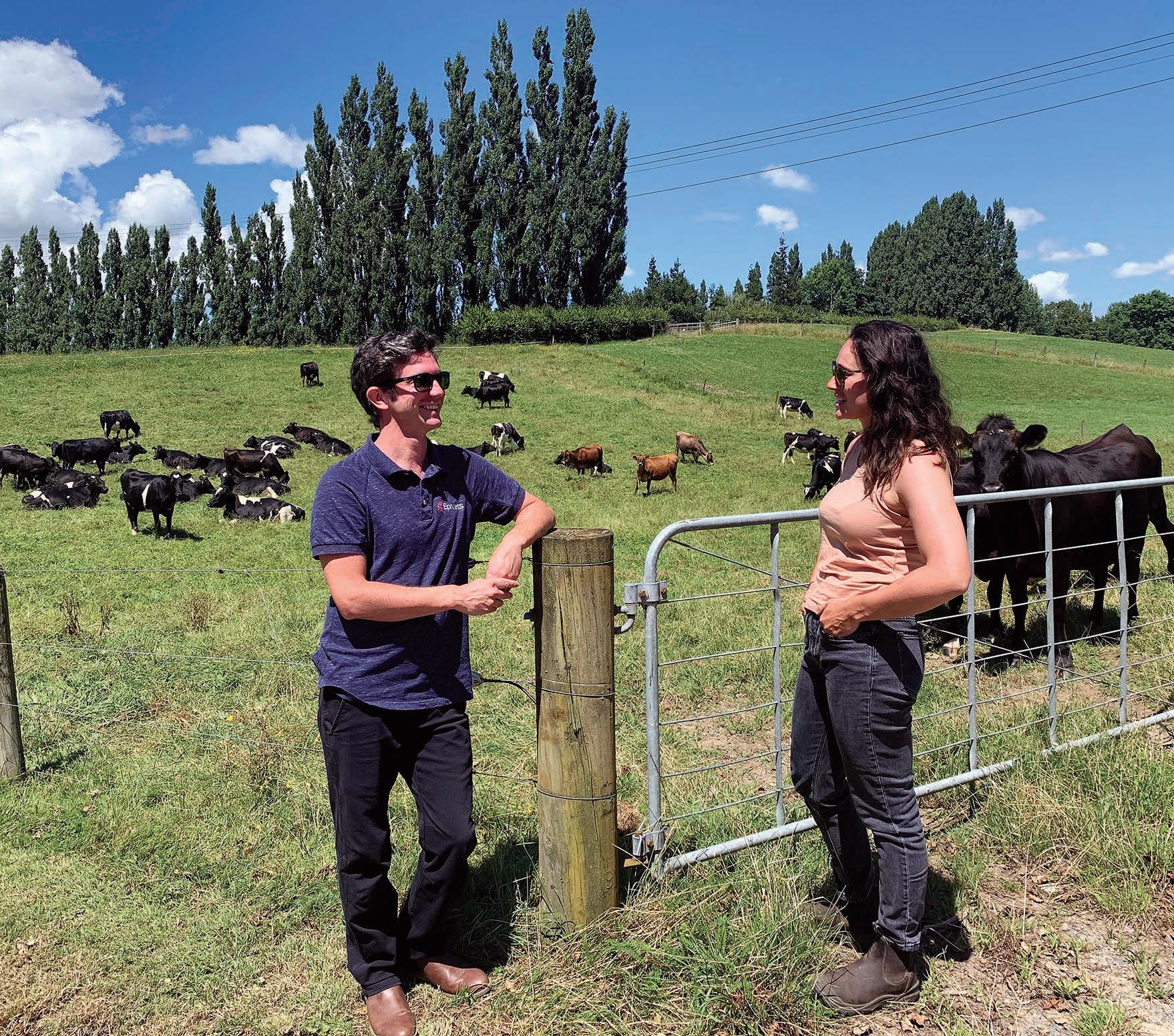
“I enjoyed the students, it was a good
experience especially because I was able to pass on what I had learnt since graduating.
“It can be intimidating having worldleading professors around you during vet school so it was good to feel helpful and pass on my experience about what the real world is like.”
“It can be quite easy to do research for the sake of doing research sometimes but we want to ensure we are developing practical outcomes.”
Winston Mason
After completing his master’s he jumped on a plane to do a typical Kiwi OE, headed for the United Kingdom. He went with the intention to work simply to fund his travels but found he really enjoyed the job.

“Everything is just so different, I enjoyed learning about the different systems and how they farm over there.



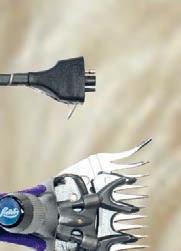
“It was tempting to stay but I just couldn’t get my head around yearround calving and how farmers have multiple revenue streams. And I realised how much I preferred the efficiency of the New Zealand seasonal system.
“Especially from a herd health approach, you can make big system changes that make a big difference versus the individual animal work I was doing in the UK. It just felt like you were preventing a sick animal from getting sicker.”
He brought back plenty of lessons from his time in the UK, particularly around lameness as it is monitored and managed differently there.
“They use tools like regular locomotion scoring to detect lame cows and treat them earlier, whereas here we tend to use it as an auditing and welfare checking tool.
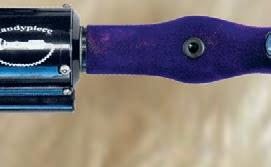

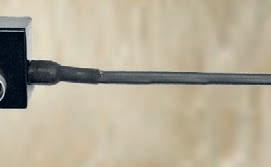
with the Victorian government and Melbourne University. But the drawcard of NZ brought him back home.
Nowadays he is based in Raglan with his partner, Amy Ross, and is not missing those busy Auckland motorways although he supports several Aucklandbased teams.


“I’m a big fan of the Black Caps, Warriors and the Blues, even though they like to hurt me,” he laughs.







“But I don’t play any sport myself anymore thanks to a few injuries. I just stick to my guitar and travelling around for work and catching up with friends.”
“I think there are a number of things they do over there that we could implement here to help reduce issues like lameness on our farms.”
Another international experience that left him appreciating NZ farming was a 12-month stint he did in Wagga Wagga, Australia,, in 2020-2021. He was working for VetEnt Research at the time and used the opportunity to work

He is loving the new venture and opportunities.


“It really is a great lifestyle having a research role that takes me all over the countryside and the community in Raglan is fantastic, so I’ve got the best of both worlds.”
“And from seeing a lot of farming systems I truly believe we are as efficient and good as anywhere in the world here in New Zealand.”
“I want to find ways to work with farmers to find solutions, considering what is within the realms of possibility.”
Winston MasonWinston is keen to help farmers with preventative measures for lameness and often presents the team’s research and findings at conferences and seminars.
ASouth Waikato dairy farmer has taken the challenges she has overcome in her life and created a business that encourages and supports other people to do the same.


Deanne Parkes, with husband Ben (known as Rani) contract milk 205 cows on 70ha near Mangakino. The allHolstein Friesian herd produces 435kgMS/cow.
Having experienced several periods of clinical depression in her lifetime, Deanne is using her now-thriving mental health and the skills she has learnt along the way to coach rural people to find out what they want from life and achieve their goals.
“Life can sometimes feel like Groundhog Day, but it’s important to be in a place where you are excited to get up and live this day,” Deanne says.
She was raised in Dannevirke by dairy farming parents. A passion for sport and exercise led her to study a Bachelor of
Sport and Exercise at university. After completing an internship with Sport and Exercise NZ she went on to hold a number of positions including lecturer at the Eastern Institute of Technology, and worked as a strength and conditioning trainer for elite athletes. Deanne worked for NZ Cricket from 2007-2009; the last tour she did with them was when she was pregnant with her and Rani’s first child, Maz, now 13. They also have Millie, 11, and Paddy, 9.
When the couple were living in Napier – Rani was working as a builder, and Deanne did strength and conditioning work – Rani was the victim of a violent crime.
“After that, we completely reassessed where we were in our lives and what we were doing,” Deanne says.
“After going on a hunting trip with my family, Rani came home and thought he might like to go dairy farming.”
Their first farming job was at Tīrau, with Deanne working for NZ Rowing
Deanne Parkes uses the skills she learnt working with elite athletes – and the experience of her own mental health struggle – to help people find a happy and fulfilled life.
South Waikato dairy farmer Deanne Parkes has taken the challenges she has overcome in her life and created a business that encourages and supports other people to do the same.The Parkes’ 205-cow herd is Holstein Friesian and produces 435kgMS/cow.
during the build-up to the Rowing World Cup in 2010. After living in Tīrau for one year and around the Tararua region for 10 years, they moved to their current farm, where they are now in their second season.



She says during this time she experienced two very deep bouts of depression: in 2012, and then in 2018, when she was diagnosed with clinical depression.
“I think I had experienced depression from a very young age but had never had a diagnosis.












“I went about my work and my community life wearing a mask; all the while I was slowly dying inside.”


She sought help from a friend and the Rural Support Trust, and then worked with her GP, a psychologist, the Rural Support Trust and her own coaches to recover.


“Alongside medication, I was taught the tools to realise my self-worth, say no, clear my mind, learn to sit and have a cuppa without thinking of everything I
Continued page 34


Deanne is a rural development leader helping rural businesses grow their staff at ground level, helping to improve communication and team culture and as a life coach doing one-to-one coaching, helping people unlock their courage to find out what they want in life, and achieve it.
discount. Offer not in conjunction with any other promotion.

had to do, put myself first so I could then serve others, set boundaries, stop trying to save everyone, and communicate kindly to myself,” she says.
“I went from being surrounded by darkness to a life of light; it took a few years but the hard work of making changes was worth it.”
“When I was a strength and conditioning trainer I worked one-on-one with athletes at times, and I found these sessions provided the opportunity to really get to know the athletes and what was holding them back.
“I had a knack for knowing how to ask the hard questions that would lead to addressing the barriers they had not considered. I have been coaching on and off for a long time.”
That, together with a stint in succession planning with rural families and her own personal experience with mental health, has seen her business evolve over time. There are two sides to her business: as a rural development leader, and as a life coach.
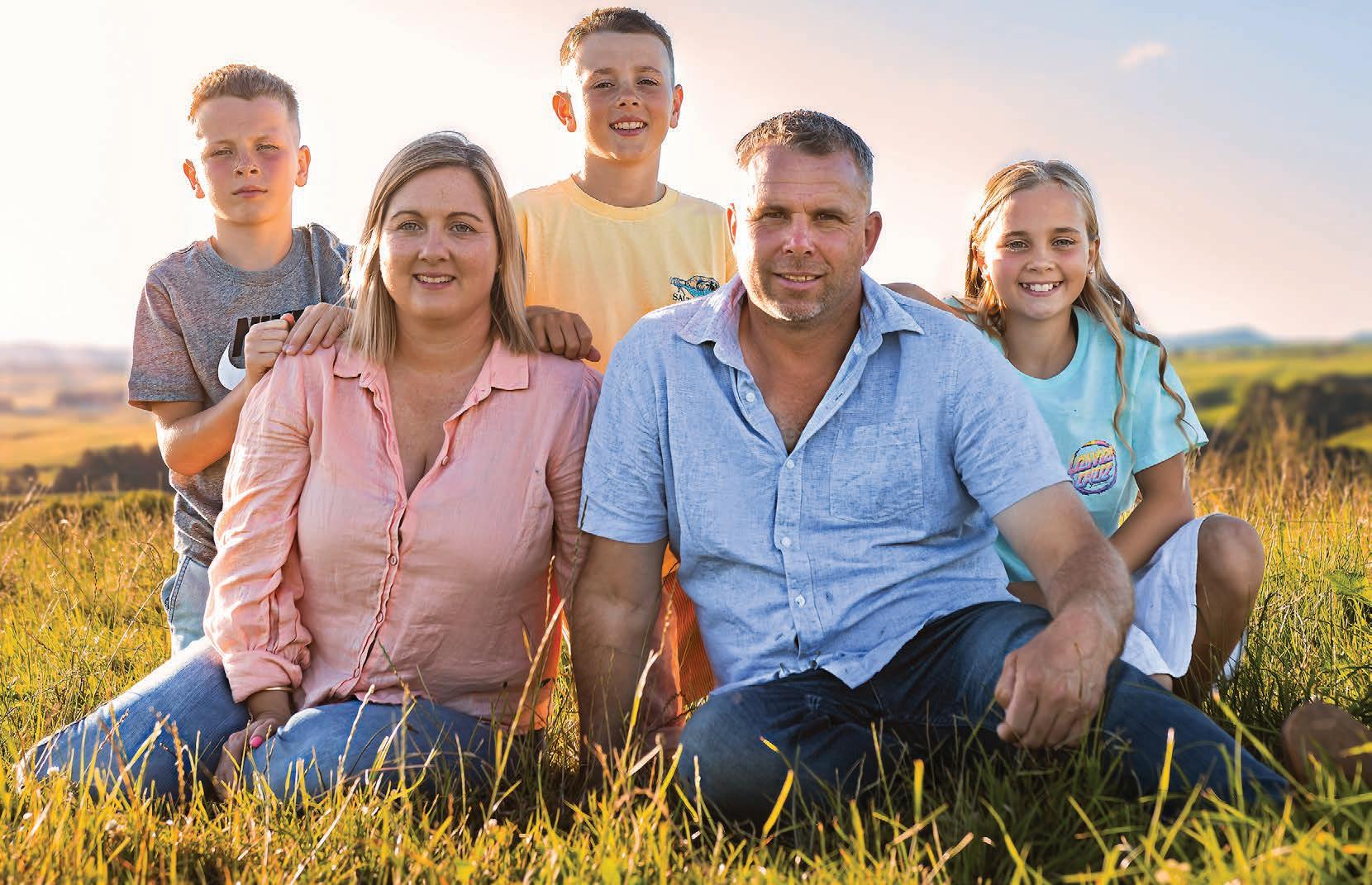
to build quick, trusting relationships with the farmers,” she says.
“A part of this is that I understand dayto-day farming demands.”
She is also moving into keynote speaking, telling her own story of how she overcame depression.
The main part of her business is oneto-one coaching, helping people unlock their courage to find out what they want in life, and achieve it.
“I work with a lot of women to help them understand what it is they want and provide the tools and support to put that into practice,” she says.
“Together, we work through any roadblocks that come up.”
In early 2022 she launched her business as a coach, a culmination of many years of encouraging those around her while she was in her sport and exercise roles.
As a rural development leader, she helps rural businesses grow their staff at ground level, helping to improve communication and team culture and decrease the misunderstandings that often happen due to poor communication. She runs workshops using TetraMap, a technique that helps people better understand themselves and others.
“These workshops are extremely successful with farming staff as I am able
She says a lot of people are unsure of coaching.
“They are afraid of the unknown.
“But half the challenge is finding a person you gel with.
“People spend hundreds of dollars on a dress to feel good, so why not have the courage to invest in real, lasting change? Change starts with you.”
A regular coaching session is an hour that is all about the client: they can take off the “mask” they wear at school, in the community or at home, and work with
“I think I had experienced depression from a very young age but had never had a diagnosis. I went about my work and my community life wearing a mask; all the while I was slowly dying inside.”
Deanne Parkes
Deanne to grow into the person they want to be.
“I talk a lot about courage, but it is central to growth,” she says.
“We have this idea that women are like Disney princesses who need to be saved – but it’s you who is going to save you. Putting the oxygen mask on yourself first is a great analogy, because you’re no good to anyone if you aren’t in a good place.”
Her role on her own farm is “to support Rani”.
“I milk the cows when needed, which I enjoy because it’s my thinking and singing time,” she says with a grin.
“We have very clear roles around calving time, when I am assisting in a more regular role, which is important when working with anyone, especially your partner.


“The coaching business fits in well with our family and I can work around the busier times on farm; I’m able to ease off the clients during calving, for example. There is flexibility there. I can see clients face to face or via Zoom calls – although rural internet is testing sometimes.”
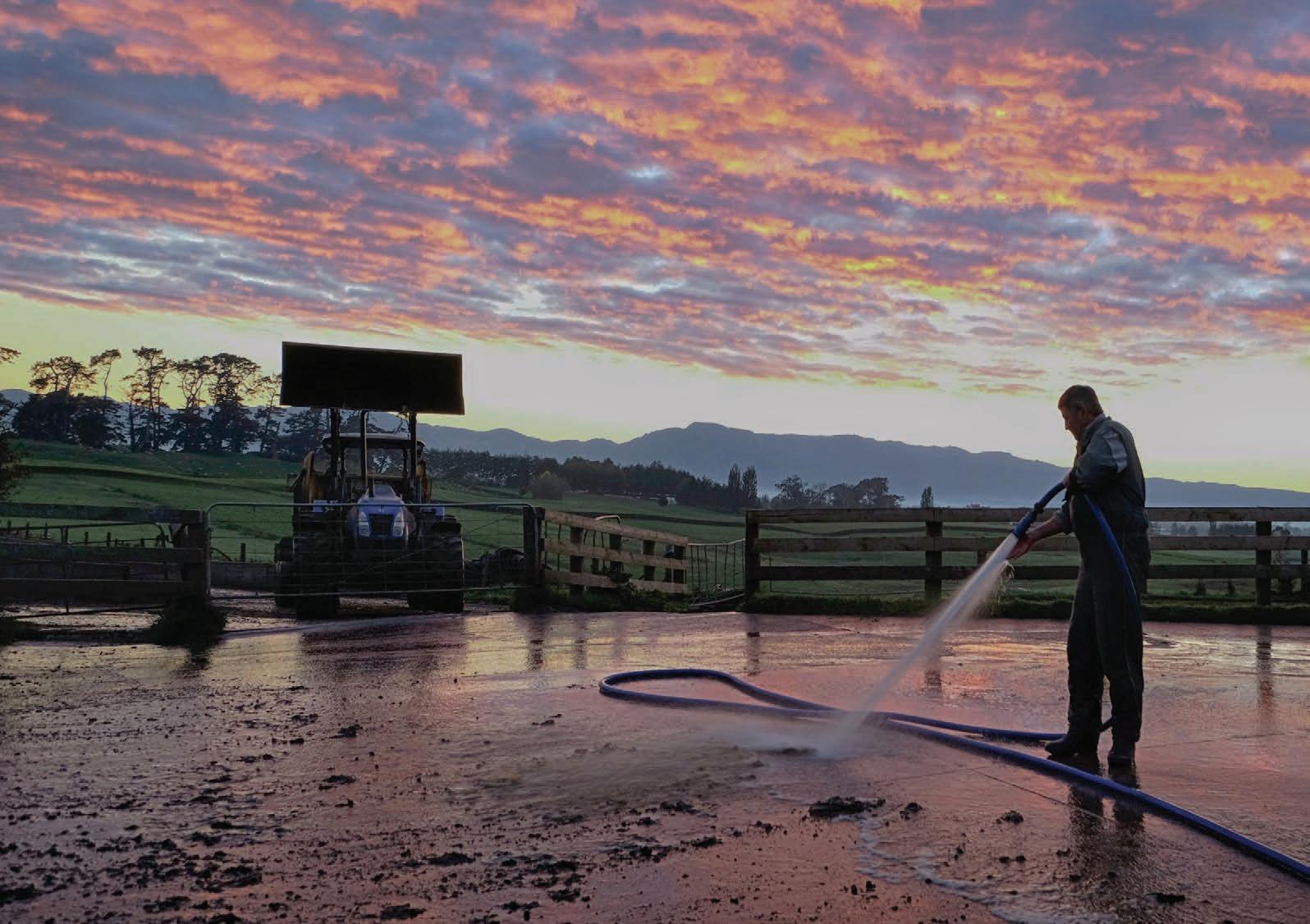
One and a half years after their move from Tararua, she says, they are slowly adjusting, although it was hard on the kids at first.
“We now have the autonomy on farm that we were lacking in our last job,” she says.

“Mangakino is a magical place to live, with warmer weather, and it’s close to the centre of the North Island.
“It has also been fantastic to learn more about my family history by moving here.”


Deanne is referring to being a descendant of Wairarapa Moana; a lot of her family assisted with the building of the town and dams when Mangakino was first established.
She says although her family good naturedly tease them about being “hobby farmers”, a smaller farm fits well with their lifestyle.
“We get to spend heaps of time with the kids, and we have a relief milker who takes some pressure off,” she says. “I’ve been involved with Dairy Women’s Network and other community groups; I like to see people enjoying life.”

She says covid has been a “forced pause” for many people, resulting in them doing a stocktake of their life and revisiting their dreams and aspirations.
“I want people to know that they can have a really joyful, fulfilled life. If you are feeling low or unfulfilled with your life, know that you don’t have to live like that.”
“We have this idea that women are like Disney princesses who need to be saved – but it’s you who is going to save you. Putting the oxygen mask on yourself first is a great analogy, because you’re no good to anyone if you aren’t in a good place.”
Deanne Parkes
Johne’s disease costs the New Zealand dairy industry millions of dollars in production but a new test may help farmers detect it earlier.
Johne’s disease is a complex disease that can be hard to spot but an Auckland-based diagnostic company, Pictor, has been developing a test that could change the way it is detected and managed on farm.
Pictor commercial operations director, Andrew Charles, is excited about what this could mean for farmers when it comes to improving the health and productivity of their herds.

“The diagnostic testing currently used in New Zealand for Johne’s, BVD and other diseases, is normally based on single selected antigens that get broad responses from animals,” Charles said.

“But we have found a way to use a number of different antigens within a single test, allowing the disease to be detected a lot earlier, as opposed to the existing tests that routinely only detect the disease one to two years after the animal has been infected.”
Pictor has utilised knowledge from a range of universities around the world to identify a number of antigens that can detect antibodies throughout the different stages of a Johne’s disease infection. They are able to use multiple antigens with an approach called multiplexing, which enables them to
print up to nine different proteins within a single testing well. The test can use milk or serum taken from blood samples from farms and processed within an animal health laboratory.
“A more sensitive test that will be able to determine the earlier versus later stages of infection has the potential to change the course of Johne’s disease
management,” Charles said.
“Typically, cows detected with Johne’s disease are culled to reduce the chances of transmitting it to other cows but by that point they are often already shedding the disease and infecting other animals.
“If farmers can find out earlier if a cow carries the disease before she starts shedding and showing clinical signs, they can track the infection and manage cows accordingly while reducing the risk to the rest of their animals.”
Johne’s disease is estimated to cost New Zealand as much as $88 million in lost production each year and is mostly transmitted through infected faeces. It can also be passed on to calves through colostrum – and knowing which cows are infected can prevent their colostrum from being used.
The test is in the late stages of development and has been supported by the Ministry for Primary Industries’ (MPI) Sustainable Food & Fibre Futures fund. Pictor hopes to launch it in the next few months and farmers will be able to access it through their veterinarians.
The idea evolved from conversations Pictor had with LIC, originally to test for Johne’s in conjunction with pregnancy. That type of test proved difficult, but
Gain knowledge and practical skills.
Lameness is now amongst the top three health issues on-farm and it is costing New Zealand dairy farmers millions of dollars every year.
Course Information:
ASHBURTON: 1 - 5 May 2023 & 4 - 8 December 2023
BOOK NOW: $2,499 + gst per person
This is an intensive 5-day course that covers both the theory and the practice of hoof care and hoof trimming techniques led by our director Fred Hoekstra, who is NZ’s only fully qualified hoof care instructor. Held at DHI headquarters and on local host farms. Register today at dhi.ac.nz


through that development Pictor began exploring the idea of using the multiplex platform to look at multiple different markers of Johne’s disease.

Johne’s testing has been becoming increasingly popular in New Zealand, with about 1.2 million tests carried out last year, up from 350,000 four years ago.



Charles said he can see how a more sensitive test will provide more opportunities for farmers to test outside of the traditional testing window.
“The increase in testing here in New Zealand is all farmer-led and it is being driven by improved productivity and sustainability.
“So we knew there was an appetite and once the test is being utilised in New Zealand we will promote it to the other 20-odd countries around the world that have a disease control programme in place for Johne’s.”
Pictor expanded into animal health about three years ago when it recognised there were a lot of opportunities for
innovation. It has further projects in the pipeline including another MPIsupported project for Mycoplasma bovis testing and a covid-19 antibody test.
“It’s an exciting space and we look forward to helping farmers improve productivity on their farms through better management,” Charles said. n
To discover the optimum way of getting calcium and magnesium into your cows visit cplimesolutions.net.nz or call us on 0508 678 464
Vitalise CalMag

Pelletised Calcium and Magnesium
Ca 23g Mg 8g
Vitalise CalMag + Rumenox
Ca 23g Mg 7.7g
Ca 23g Mg 8g
Monensin 300mg
Pelletised Calcium and Magnesium with Rumenox
Ca 23g Mg 7.7g
Ca 23g Mg 7.7g Cu 220mg I 12mg
Monensin 300mg
Co 8mg Se 8mg
Ca 23g Mg 8g
Zn 400mg
Vitalise CalMag + Trace Elements

Ca 23g Mg 7.7g Cu 220mg I 12mg
Ca 23g Mg 7.7g
Co 8mg Se 8mg
Monensin 300mg
Zn 400mg
Pelletised Calcium and Magnesium with Trace Elements (Copper, Cobalt, Selenium, Zinc, Iodine)

Ca 23g Mg 7.7g Cu 220mg I 12mg
Co 8mg Se 8mg
Zn 400mg
“A more sensitive test that will be able to determine the earlier stages of infection has the potential to change the course of Johne’s disease management.”
Andrew Charles
Regular dental check-ups can hurt the pocket at the time but they can prevent a much bigger spend and a lot more pain down the track. Proactively monitoring a herd can offer the same protection, and with rising costs, public perception pressures and competitive markets, more farmers are seeing the value in proactive herd health and welfare monitoring.
There has been a big shift in mindset across the industry in general and while it seems there are obvious benefits for some types of farmers to engage in a formal monitoring programme, others question the value for their situation.
But there are a raft of benefits that can appeal to any type of farmer and align with everyone’s values.
Whether you’re part of a corporate group, on a board, have a herd manager or are an owner operator, there is a level of assurance when the animal health expert, the veterinarian, is regularly connected to the herd. They can identify potential issues before they escalate and cost the farm business a lot more to fix and in lost productivity.
And for the manager, data can be utilised to demonstrate they are doing a good job for their herd owners and be showcased to future employers.
There is also the social licence. Farmers are becoming more aware of public perception and feeling like they are under a magnifying glass. But we hear from farmers directly that when they are involved in a proactive herd monitoring programme such as WelFarm, they feel relieved knowing they have data to cover their backside should they ever need it.
And it can give peace of mind knowing they are doing the best for their herd and that they will have an opportunity to pick up on anything that may start slipping. They can give positive feedback when things are going right, which can be valuable for a herd owner.
Time is precious on a dairy farm, so it is
important to know which areas need the most attention. With herd-monitoring data, farmers and vets can identify what is going well and where there are opportunities to improve, and prioritise accordingly.
It is also an efficient way to utilise a vet, as proactive spend can be budgeted, where reactive spend can escalate quickly. It also provides regular opportunities to pick their brains and maximise the value of the relationship. A lot of time can be wasted trying to resolve a herd health issue where proactive management can be timebudgeted and prevent the issue in the first place. And if issues are raised it is usually early enough to scope out the plan clearly.
If managers are trying to pitch a business case for things they may need for the herd, data can provide evidence to assure owners it is a necessary spend. For example, feed from body condition score results or lameness figures to support race repairs or staff training.
Without monitoring it is hard to identify where improvements can be made, but when there is data available it can be assessed against science and economics to determine the potential gains from improvement.
Saving one cow from proactive monitoring, or lifting reproductive performance results by a few percent could mean the monitoring programme is paid for. And everyone prefers dealing with healthy cows rather than being an ambulance at the bottom of the cliff.

The value of benchmarking cannot be underestimated. Curiosity is part of human nature and we want to know how our performance compares to that of others. Sometimes targets can feel unobtainable but a benchmark is the reality of what is being achieved.
There is also extensive benefits in benchmarking against yourself, to see if your efforts are working or if you need to try a different tactic.
We know the industry is changing and there could be more requirements into the future, so engaging in proactive herd health and welfare monitoring could simply be a way to stay ahead of the game that makes it worthwhile for your business.
Talk to your vet about proactive monitoring for your herd and check out our website welfarm.co.nz for more information.
Ihave heard from lots of farmers about how busy and challenging it’s been in the past few years, especially as many farms continue to operate shortstaffed and struggle to find employees to fill those gaps.
That’s why DairyNZ continues its mission to find committed Kiwis to work on your dairy farms. Our nationwide GoDairy campaign will begin again during March. GoDairy will help recruit committed young Kiwis, by connecting job seekers to the latest farm assistant vacancies across New Zealand.



Through the GoDairy campaign, we will be sending active job seekers to Farm Source to apply for roles, so we need farmers to list their current job vacancies on Farm Source. This will help jobseekers find great work and highlight the size of our sector’s workforce shortage.
When writing up your advert, here are a few top tips for getting your job noticed:
• Tell them about you and your farm Think about how you can stand out from the crowd. Consider what makes your farm unique and a great place to work. This is partly made up of your farm information including location, cow numbers, shed and farm system.
However, this is also about the culture of your organisation. It’s important to get across the values and vision you have for your business, and the culture you have.
Get current team members involved in this with a 10-minute meeting. Ask them “What would you tell your friends about why it’s good working here?” Incorporate their feedback into your job advert.
• Tell them why they should choose your job
To attract candidates, your business needs to be in shape and have the basics right. Some key things to consider are the current roster, hours of work, hourly rate of pay and the state and availability of accommodation.
Job seekers will be attracted to a different combination of benefits including location and remuneration, the type of work and the opportunities to align with their work and career
aspirations. Promoting the things that make you different and appealing in these areas will help job seekers determine if your job opportunity is a good fit for them.
Once you have written your advertisement, list it online at nzfarmsource.co.nz/jobs.
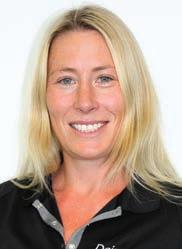
Longer term, developing a great workplace for your staff will mean that you will have lower turnover while finding it easier to attract committed staff members when vacancies do arise. n

MORE:
DairyNZ has a range of tools and advice for recruitment, onboarding and creating a great workplace at dairynz.co.nz/people.

The sun, sandy beaches and surf of Mount Maunganui provided a dream lifestyle for a Bay of Plenty farmer – until covid hit.
The pandemic changed everything for Sam Taylor-Hill and left him feeling frustrated and deflated when he was made redundant from his brewery sales role. He had spent 12 years in hospitality, built a sound reputation and achieved some great things, but was back to square one unsure where to go next.
A friend snaffled him up to give him a hand getting his electrician business going. Taylor-Hill worked with him for 18 months as an apprentice but struggled to find his spark.
Arriving home one evening, he found his partner, Dayna Rowe, who was managing her family’s farm, stressing about finding staff.
“It was like the penny dropped, here I was not happy with what I was doing and she needed someone to help out on the farm,” Taylor-Hill says.
“So I dropped tools and took up a fulltime role as a farm assistant and I am absolutely loving it.”
He is a farm assistant on the Rowe’s family farm, milking 920 cows.
A defining moment was when he and Dayna were calving a cow together
in the middle of the night. Being a beach kid from Whanganui, he had never experienced anything like it and “had no idea where my butter came from”.
Before then Taylor-Hill had been involved with night checks during
calving and helped on weekends, so he had some foundational skills and knowledge, but he has been blown away by the support across the industry.
“The support is unreal, it’s incredible how willing everyone is to help each other.

“In the bar industry everyone stuck to themselves, but in farming, if you have a problem there’s always someone who can share their experience and give you advice.”
Entering farming was a huge eyeopener for him, having had an image of farmers as pretty gruff.
“I didn’t realise how much was involved in looking after the herd and producing milk. There’s so much going on with grazing management, weather and the general day-to-day and flowing with the punches.
“If something breaks you need to fix it, you’ve got to shoot from the hip sometimes.
“It’s the biggest sector in New Zealand but I reckon 95% of people have no idea what a farmer does and what they’re doing for the country.”
He thinks it has been a massive perk working and living with Dayna.
“Not many people get to spend that much time with their manager and it has been helpful because I can pick her brains and ask lots of questions so I’ve been learning things quickly.”
The BOP farm owned by Dayna’s parents. Grant and Ngarie Rowe, is 15 minutes south of Papamoa in an area called Pongakawa. It is 270ha and the 920 cows are milked through a 60-bail rotary with automatic cup removers. The farm also has Halter, which Taylor-Hill calls a game-changer.
“I’ve spoken to enough farmers to know how spoiled I am on this farm,” he laughs.


“The Halter system is amazing, we’re not in the paddocks chasing cows and setting up tape, it’s such an efficient way to manage the farm.”
The milking routine starts as 11 milkings in seven days and after Christmas that changes to 10 milkings across seven days.
There are four in the team and the plan is he and Dayna will start contract milking next season.
They make an effort to maintain a work-life balance and he has been impressed by the support system and knowledge surrounding mental health for farmers.
“Dayna is big on getting off the farm and having other interests, and I can see how it can make a huge difference.
“You can tell when someone hasn’t got that balance, they just lose their enthusiasm and struggle with motivation, but we work hard to keep that off-farm life.”
They are both into surfing and think the Surfing for Farmers initiative is amazing. They keep a range of outdoor hobbies and love random trips away. Taylor-Hill is also a marriage celebrant, having become one after a drunken dare from some friends who decided they would like him to marry them.
“I woke up with the paperwork half
filled in so I decided to finish it for a laugh.
“I got the licence just in time to marry them and have been involved in a range of weddings since then.
“There’s heaps of demand for someone less traditional I guess, but I like to stick with people I already know.”
Before he came onto the farm full time they had planned he would be involved in the administration and business side when they start contract milking. They could utilise the skills he has from managing bars and he would also help on the weekends when staff have time off. It could still be on the cards one day but for now he is glad to have found a hands-on skilled role that keeps him outside.
“I still live by the philosophy that if you enjoy what you’re doing it isn’t work and to me, farming is exactly that.
“I think if more people were exposed to it younger we’d all be a lot more grounded.”
Challenges on farm occur every day but learning new ways of thinking to deal with them helps Taranaki farmer Kane Brisco meet them head-on.
How you react to challenges has a huge impact on how well you manage the ups and downs of farming, says Taranaki dairy farmer Kane Brisco. We asked him to share his tips for staying calm under pressure.
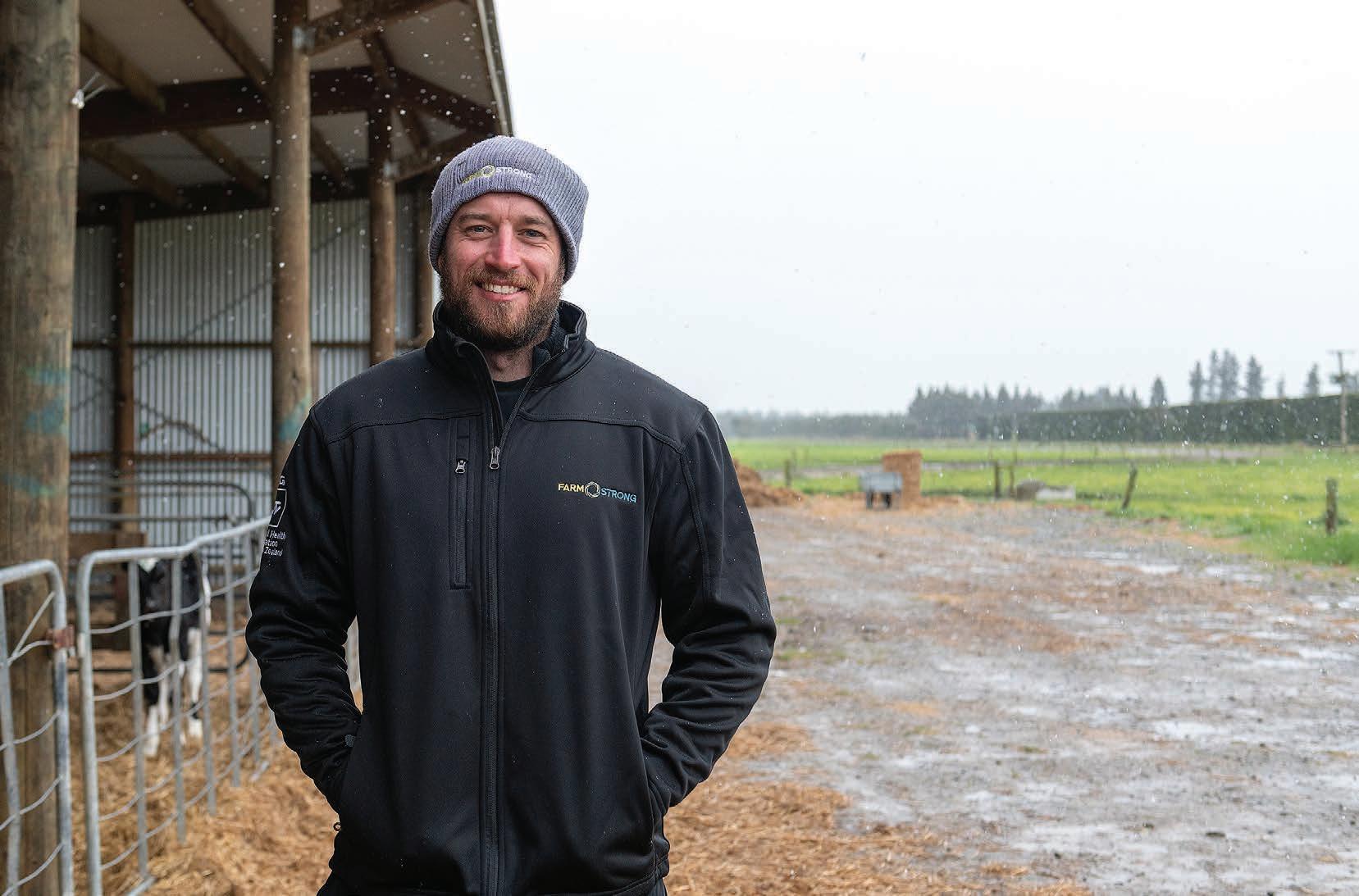
Tell us about a challenge you’ve had on farm and how your thinking helped you deal with that.
I guess one of the bigger challenges I had was taking the step up to 50:50 sharemilking, taking ownership of the cows and all the financial pressure and responsibility that goes with that. I was learning on the job and the payout dropped. There was so much out of my control influencing me every day. It felt really hard.
Sounds stressful. How did you cope with that?
At first, it was really easy to fall into that negative headspace and not see light at the end of the tunnel. What really helped me was someone pulling me back from the day-on-day farm work and making me take a bird’s eye view of the situation. Stepping back and looking at the whole
picture was really helpful. I was suddenly more open to ideas and just felt more positive.
Did that change how you farmed after that?
Yes, I started accepting that no matter what I did to avoid challenges, they were always going to come in one form or another. In farming, the challenges find you and you get caught out if you’re not prepared for them.
So what’s your mindset now?
My mindset is that the challenges are there for a reason – they’re there to teach you something. If you have that attitude you can learn and grow from them. I’ve learnt if you can stand up and deal with challenges, the outcome’s going to be much more positive.
One of the things I do now is that after I’ve been through a challenge on farm, I
go back and make sure I take the lessons out of it. I take some time to reflect and learn from it. That way it feels like you’re doing something proactive, because in farming you know there’s always going to be another challenge coming.
Sounds like you trained your brain to think differently? It’s a different mentality.
Exactly. I’ve got good at actively
“What really helped me was someone pulling me back from the day-on-day farm work and making me take a bird’s eye view of the situation.”
Kane Brisco
practising having a positive mindset by catching my negative thoughts and dealing with them. It’s a skill that anyone can learn. The more you do it, the better you get at it. It involves catching those negative thoughts and asking yourself whether they are actually true or not, because a lot of the time they won’t be true.
Any other tips for dealing with pressure?
I’ve taken a lot out of the sport of boxing to carry over into farm life. When you get angry in boxing you lose all your focus and that’s when you make mistakes. When the pressure’s on, it’s all about staying calm so you can think clearly. If you can take some of the emotion out of a situation, you make far better decisions. These days I make sure I always deal with facts, rather than just what I’m feeling.
What about days when nothing seems to go right? How do you manage them?
One of the first things I do when I’m feeling overwhelmed by lots going on is to get stuff out of my mind and onto a bit of paper. I’ve found that hugely beneficial because in our minds, we can often get quite negative. We think about the future a lot and head to the worst case scenario.
But when you write stuff down, it takes all the “spin” out of your head and you can just deal in facts.
How does that help deal with the challenge?
It identifies your next job at hand. Once you put the facts down on a piece of paper, it’s easy to clarify and prioritise what you actually need to do. I find that instantly takes that negativity out of my mind. It means you can embrace a challenge and see it as an opportunity to step up and prove how good you are, rather than viewing every challenge as something that’s holding you down and making your day crap.
What’s been the biggest change in your thinking since you began farming?
I’ve stopped being such a perfectionist. In the early days, it was something that really drove me. I’d achieve something, then instantly reset the goalposts, which meant I never felt satisfied. It’s so easy to have a bad day when you’re a perfectionist, because nothing’s ever good enough.
But in farming nothing ever goes to plan. I had to learn to accept that and become more flexible. If you can’t adjust your thinking like that, it makes a bad day even harder.
Are there any other thinking traps to avoid?
One that stands out to me is “black and white” thinking. That’s something I noticed early on. When you’re first learning how to farm from previous generations, it’s easy to think that’s the only way to do something because it has been successful for them. Their way or the highway – that was my mantra. But after a while I realised the real challenge was to evolve and develop my own ideas. The world’s changing so quickly you can’t afford to get stuck in that “black and white” mindset. To keep up with challenges in farming you have to be open to new ideas.
How do you make sure you’re in the right headspace to make good decisions on farm?
I’ve learnt it’s really important for me to have balance in my life and work on the business and not just on the farm. Taking time out of my week to sit down and problem-solve in a good, positive headspace has been really crucial to making good decisions.
How do you achieve that balance?
For me it’s about finding something to do off farm that I’m passionate about. That helps create that positive headspace where all the good ideas come from. When I’m open-minded and in a good headspace that sets me up to deal with the challenges going forward.
What does being Farmstrong mean to you?
It’s about dealing with the full picture. Not just concentrating on being a good farmer, but being a great person off farm as well. I reckon they’re both intertwined. Being a good, well-rounded person generally leads to being a great farmer on farm. n


MORE:
To find out what else could work for you and your team, head to www.farmstrong. co.nz for free farmer-to-farmer tools and resources.

For tips and ideas, visit farmstrong.co.nz

AgResearch scientists show that the plantain-nitrogen calculation is not necessarily a simple one.
In an experiment that used an unconventional method to measure the nitrogen content of cows’ urine, AgResearch scientists have shown that plantain has to be at significant levels in pasture mixes to be effective in reducing N excretion.
Their research used sensors attached under the tail of cows to measure how much nitrogen they excreted. Lead scientist Dr Lisa Box said the project differed from previous studies in that it measured the cow’s N output throughout the day rather than by oneoff spot testing.
“Spot samples of urine are less useful because you can only look at the concentration of nitrogen and at one point of the day, but actually what happens is that both volume and N concentration vary significantly through the day so they’re not really representative of a day’s worth of nitrogen coming out of that cow in urine,” Box said.
To conduct the experiment, AgResearch engineers had to come up with a way to collect the urine and direct it through the sensors that were to be attached to each of the 20 non-lactating cows that were fed different, randomly assigned, diets with 0%, 20%, 40%, 60% or 100% plantain (dry matter basis), with the remainder comprised of ryegrass-white clover pasture and grass-silage.
“It looks quite funny, it’s moulded off a Russian stacking doll because it fits over the back end of the cows quite nicely and that funnels the urine into our sensors. They’re attached to the back of the cow and clipped to a cover to hold them on so the urine filters through the sensor each time a cow urinates.

“We measured the volume and concentration of nitrogen and what time urination happened so you get the entire days’ worth of information of what that cow’s done in terms of urinating.”
Reducing the total amount of urine nitrogen from cows is not quite as simple as, “Feed them more plantain
time
happened
and the amount of N will magically drop correspondingly”, because plantain contains far more water than other pasture and therefore the cows pee more. And there’s a difference between nitrogen concentration and nitrogen loads.
“If you put a teaspoon of sugar in a whole bucket of water, you won’t really taste it, but if you put a teaspoon of sugar in a shot glass it will be quite sweet and that’s kinda what we’re talking about –you’re still consuming the same amount of sugar and cows are still urinating the
same amount of N but the water portion changes,” Box explained.
The experiment suggests that a reduction in urine nitrogen concentration can be achieved on low levels of plantain (20% of the diet), but greater than 60% plantain diets are required to reduce N load per event, which is more important in terms of N leaching potential.
When the experiment was conducted in Waikato, the region was in drought so extra N was spread on plantain pasture to ensure there was enough available to
feed the cows, and Box believes this may have had an effect on the outcome.





“Usually you’d expect plantain to have a similar or lower crude protein concentration than ryegrass/white clover and we had the opposite. If we take that into account, maybe we wouldn’t have needed so much plantain.

“That was probably the most exciting thing out of this, that the animals were on plantain that had been fertilised so they were eating a whole heap more nitrogen than those just on ryegrass and white clover and silage, yet they weren’t excreting any more nitrogen so really plantain was able to reduce the urine nitrogen a bit relative to intake.”
Like much research, this experiment has thrown up new questions that need to be answered, Box said.
“I thought it was good news but the practical side of me thought, ‘Oh man,
if we need this much to have an effect through the animal, how is that going to be achieved, what does it mean for these people who’re putting in 15-20% plantain on farm, is that going to be meaningful?’, and I thought, this could be quite a challenge.”
But she was quick to add that the effect of plantain on urine nitrogen is only part of the story because the plant also works in the soil, reducing N loss by slowing down how quickly nitrogen is transformed in nitrate.
Box also identified something farmers planting plantain should be aware of: “Once you get plantain to 40% of the diet, cattle don’t drink any water from the troughs because they don’t need to, so if you’re putting stuff like zinc in the drinking water, you need to consider that they’re not going to be consuming it and find another way.” n
The urine sensors are moulded on a Russian stacking doll because it fits over the backend of the cow quite nicely and that funnels urine into the sensors.“That was probably the most exciting thing out of this, that the animals were on plantain that had been fertilised so they were eating a whole heap more nitrogen than those just on ryegrass and white clover and silage, yet they weren’t excreting any more nitrogen so really plantain was able to reduce the urine nitrogen a bit relative to intake.”
Lisa BoxResearch lead scientist Lisa Box said the urine sensors showed a significant amount of plantain is needed in pasture to reduce nitrogen in cows’ pee.
Innovative new research has signalled feeding cows the leafy herb plantain can reduce nitrogen leaching from dairy farms by 20-60%.
The results, from the DairyNZ-led Plantain Potency and Practice (PPP) programme, prove that using Ecotain plantain in pasture can significantly reduce nitrogen entering waterways.
Farm trials at Massey University and initial results from a trial at Lincoln University are showing similar trends. The trials are part of the nationwide PPP research and development programme that partners with dairy farmers, industry and the government.
“These are exciting results – we now have robust scientific evidence that Ecotain plantain is an effective solution to help dairy farmers further reduce farm footprint and continue playing their part in improving water quality,” DairyNZ chief executive Dr Tim Mackle said.
“Plantain can bring significant benefits to local waterways and communities – we all want healthy freshwater to swim and play in, and dairy farmers can confidently use Ecotain plantain on farm to support that.”
Mackle said the findings are part of a broader programme of work to continue delivering on dairy’s commitment to reducing its environmental footprint while remaining profitable.
The $22 million, seven-year PPP programme is funded by DairyNZ, by the government through the Ministry
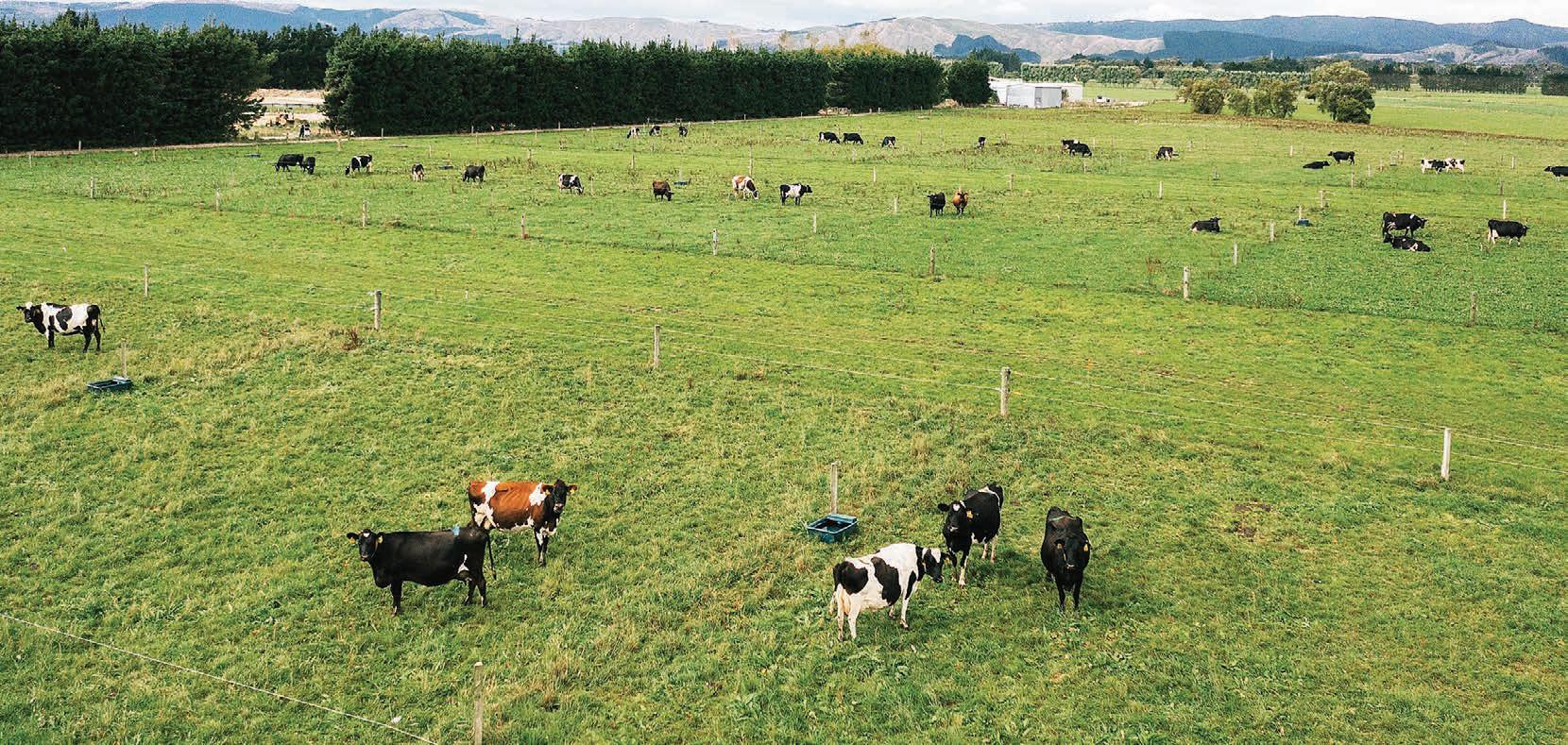
for Primary Industries’ Sustainable Food & Fibre Futures fund, PGG Wrightson Seeds and Fonterra, working with six research and delivery partners.
The programme uses Ecotain environmental plantain from Agricom because it has proven effectiveness. An evaluation system is available to assess the environmental benefits of all plantain cultivars sold by a range of providers.
At the Massey University farm trial, scientists are measuring nitrogen leaching from paddocks grazed by 80 dairy cows. After two years, the trial results have shown nitrogen leaching reduced by 20-60% in perennial ryegrass and clover pastures containing 30-50% Ecotain plantain.
The results are compared to traditional perennial ryegrass and clover paddocks, the most common pasture types in New Zealand. There was no difference in milk production between the plantain and control pastures in the trial.
The amount of reduced nitrogen leaching depends on the quantity of plantain in the pasture, the soil type, climate and farm system. The Massey University trial will continue for a further two years.
Initial results from the programme’s Lincoln University study in Canterbury, on lighter soils under irrigation, show similar trends to the Massey University trial, with a 38-50% reduction in nitrogen leaching from pasture containing 24% Ecotain
plantain. More data is being collected to confirm these results.
Massey University Professor Emeritus Peter Kemp and his team have been researching the effects of plantain over several years. Experimental plots were established at the university in 2019.
“Building on decades of pastoral research at Massey, our team have designed an innovative drainage system that uses the soil structure on the farm to enable measurement of all the nitrogen leaching from each paddock,” he said.
“The four-year trial has had incredible success so far and our trial site allows the results to be directly transferable to current farming systems in New Zealand. Importantly for farmers, transition to plantain pastures results in no loss of production, while simultaneously reducing nitrogen leaching significantly from farms into freshwater.
“This supports current initiatives to protect our natural environment and improve waterways. Significantly, Massey University research has shown that this pasture regime also decreases the greenhouse gas emissions of nitrous oxide, a key issue for climate change,” Kemp said. n
For more information on the programme, visit dairynz.co.nz/plantain-programme
For more information on how plantain works, visit: dairynz.co.nz/plantain-benefits
A major trial demonstrates the abundant herb can help with one ofdairy’s key environmental challenges. The Plantain Potency and Practice programme’s farm trial at Massey University confirms Ecotain plantain can reduce nitrogen loss from dairy farms by 20-60%.
 By Sonita Chandar
By Sonita Chandar
A rapidly growing strategy showcases all the latest and greatest developments and innovations in the tech sector as well as the people who work in it.
Preparations for New Zealand’s biggest tech and innovation festival – aiming to transform business, educators and the community in the digital year ahead – are well underway and entries are now open.
Techweek is NZ’s premier annual festival of tech innovators, companies, products and users. It’s the week that Aotearoa New Zealand sees tomorrow’s tech first. The nationwide series of events showcases and celebrates NZ innovation, and provides a platform where people can meet to share ideas and create connections to enhance the future world.
Created by NZTech and the Hi-Tech Trust in 2012 to coincide with the HiTech Awards, the event aims to build enthusiasm around new technologies being developed in NZ.
Since 2012 it has grown from several events to a high of 562 events in 2019.
Each year, NZ’s tech entrepreneurs and innovators create incredible new technology that will enhance lives in the year ahead and beyond. Techweek is where you can experience that tech first — so you’re equipped to make tomorrow better for your business, educators or community.
The theme for Techweek23 is “Creating Tech for a Better Tomorrow” and the event will explore six topics that showcase how NZ can become a tech hub for thought leadership.
Becoming More Digital will showcase new technology to help keep people connected and the economy active.
In Celebrating Tech Leaders and Tech Stories, Techweek23 will explore some of the most innovative people and businesses in the world – and they’re
based in NZ.
• Diversity of Thought will elevate and showcase diversity excellence in digital and tech business and encourage all people to explore digital careers pathways.

• Climate and Sustainability explores the fact that NZ is at the forefront of tech solutions due to our environment.
• Advancing Māori Tech shows how promoting Māori success in tech is crucial, and how Mātauranga Māori can have a profound and positive impact on the reasons we create and the ways in which we interact with technology. Inspiring Tech Careers focuses on the next generation, who will play a crucial role in growing tech.
Kicking off Techweek23, the Tomorrow Expo in Auckland promises to be the most innovative tech event NZ has to offer, showcasing tech innovation that will transform businesses, educators and our community for the future.
Tomorrow Expo will host startup, scale-up and corporate tech exhibitors with keynotes and thought-leading speakers to an audience of tech-
interested businesses, buyers, developers, start-ups and investors.

Tech23 will be part of Tomorrow Expo – a special day dedicated to educating and inspiring future generations to follow tech careers.
Event submissions are now open and organisers are urging people to get their submission in early to give them more time to promote them. A Techweek23 programme will be released in late March.
The Tomorrow Expo will be held in Auckland May 10-12 and Techweek23 runs nationwide from May 13-20.

“Kicking off Techweek23, the Tomorrow Expo in Auckland promises to be the most innovative tech event NZ has to offer, showcasing tech innovation that will transform businesses, educators and our community for the future.”
Using Norwegian genetics is getting great results around herd health and desirable traits for a group of farms.
Agroup of certified organic farms in Southland have switched their focus from production to breeding cows that are a perfect fit for their system but still produce a whopping 1,986,705kg MS.
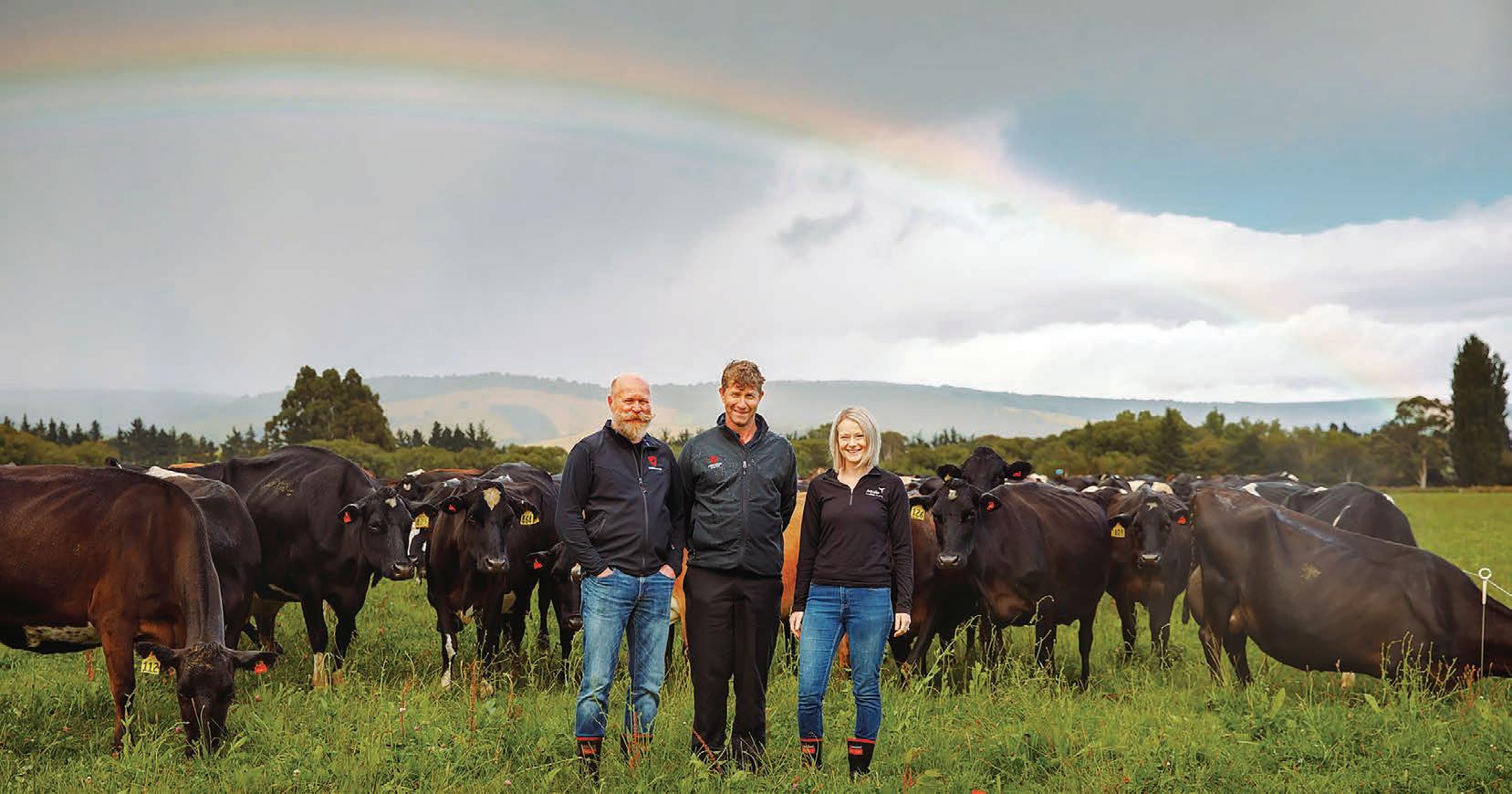
Aquila Sustainable Farming (ASF), located in Southland, is the largest supplier of certified organic milk in New Zealand and one of the largest in the southern hemisphere. The six properties under the Aquila farming portfolio, with an amalgamated farm footprint of 2,970ha hectares and four supporting lease bocks covering 1260ha are driven by principles of environmental health and sustainability.
Part of the long-term strategy for ASF was to convert the farms to certified organic to tap into higher prices and premiums for organic milk powder. Along with that, Jess Craig, general manager, said the big reasons for switching over to European Unioncertified organic were animal health, land improvement and herd quality improvement.

Each farm runs independently with a farm manager in charge of day-
to-day running and hiring, a 2IC, a herd manager and a dairy assistant, depending on the size of the farm.
The ASF management team oversees and supports the decision-making to ensure compliance with the organic certification, so all the A2 milk can be supplied to Open Country.
One of those changes was the decision to create their own custom organic breeding index through collaboration with Professor Nicolas Lopez-Villalobos from Massey University.
“When we started organic conversion, the makeup of the herd needed to look different because we weren’t only chasing milk production anymore. Our own organic breeding index has a different weighting to traits like lameness, mastitis, somatic cell count, teat placement, udder conformity and fertility, as well as milk production,” Craig said.
The priority for the 5200-strong herd changed to longevity, health and fertility, and ASF started looking into alternative breeds that could help improve these traits.
“That’s where Samen NZ came in. They started talking to us about Scandinavian Red breeds that did focus on these things.”
ASF is in its third year of using Scandinavian straws, including Norwegian Red, and this is its first year introducing the in-calf heifers to the herd.

“We’ve got two herd test results to see how they’re performing and the feedback I’ve had is that they’re really well-framed animals,” she said.
Choosing breeds with genetic traits like the Scandinavian Reds can help the farms keep their organic certification. Being certified organic, the ASF farms have a limit of three courses of treatment within a 12-month period for each cow. Craig said this means they need to be more selective about what they do on farm.
“Although we can use antibiotics, we can’t use them as a preventative treatment; we need to justify why it’s needed,” she said.
Knut Ingolf, Kate Stai and Håvard Tajet from Geno Global came to New Zealand and visited the farms at Aquila to observe

the progress of Norwegian Red. According to Ingolf, about 98% of farmers in Norway participate in keeping health records and have done since the 1970s. All medication must be administered by a veterinarian, and antibiotics aren’t used unless absolutely required. He said this has helped them keep stringent data on the breed. The data has helped them make great strides in genetic progress with the breed, and it’s because of this that, he said, “we can safely say we are the number one breed for fertility in the world”.
The high fertility and similar systems mean Norwegian Reds can be a good fit for organic farming systems like ASF. Without synchronising tools, hormones and CIDRs, Craig said, they are reliant on the performance of the animal without much help, so having breeds that are
known for high fertility is important because they can’t risk getting too few replacements.
To help with this risk, one of the limited options they do have in their arsenal is sexed semen.
Lopez-Villalobos uses herd data to work out each cow’s BW, PW and traits to inform the quality of each animal. These details are then entered into a spreadsheet, and he lets the teams know which semen each cow is best equipped for.
Craig said that while it may sound a little complicated or like a lot of work, it’s actually as simple as putting a flow chart in the shed.
“The farm teams, they like the system. As long as you set them up with a really clear system, then it’s no different than spending 30 seconds trying to find out if she’s on heat.”
The system they run at ASF means top-quality cows on their second cycle get sexed semen. First cycles get Scandinavian/Norwegian semen and the lowest 20% get mated with the bull.
“That means that the bottom 20%, they’ll always drop out, and we’ve seen our quality increase over the last two years. Using sexed semen means we can get high-quality replacements, which means we can be more targeted with our culls.”
Alongside the genetics, she credits the team at ASF for the success they’ve found. “We have a focus on leadership and make sure we do training every year. We’ve got farmers leading really good solid teams, and we’ve seen our turnover drop. That’s really assuring because it tells me the people are happy, which means the animals are happy and fed well. We must be doing something right.”
“We’ve got farmers leading really good solid teams, and we’ve seen our turnover drop. That’s really assuring because it tells me the people are happy, which means the animals are happy and fed well.”
Jess Craig
New research has confirmed that bulls’ genetics play a role in how much methane they emit, highlighting the potential for farmers to one day breed low-methane-emitting cows.
The welcome news comes following the first year of a research programme run by major New Zealand artificial breeding companies LIC and CRV.
The research, funded by the NZ Agricultural Greenhouse Gas Research Centre (NZAGRC), measures methane emissions from the burps of young bulls set to father the next generation of NZ’s dairy cows.
Results from year one, when the feed intake and methane emissions from 281 bulls were measured, found there is genetic variation in the amount of methane emitted after accounting for the feed eaten by the bulls, with the lowest bulls emitting about 15-20% less methane than the average.
LIC chief scientist Richard Spelman said these results are a big step forward for the research.
“The amount of methane a bull or cow produces directly relates to the amount of food it eats – generally speaking, the more an animal eats, the more methane it will emit.
“But after accounting for differences in the bulls’ feed intake, we’re still seeing genetic variation in their methane emissions, proving genetics do play a role. We have a sliding scale from bulls that are low-methane emitters (less than 18g methane/kg of dry matter eaten) to bulls that are on the higher end (more
than 28g of methane/kg of dry matter eaten). This is the variation we were wanting to see and we’re excited to use it to our advantage.”
Though the research is in the early stages, Spelman said the results show promise to help farmers meet environmental challenges.
“This methane research is a long-term project but it has the potential to make a real difference to farmers in the future by providing another tool to reduce their farm emissions.
“New Zealand farmers are striving to meet the challenge of being profitable and sustainable, and research like this will help ensure reducing a farm’s emissions doesn’t have to come at the cost of reducing its milk production.”

CRV grass-fed genetics manager Peter van Elzakker said it’s pleasing to see that the first-year results of the trial align with the company’s methane trial work with Wageningen University in the Netherlands.
“The findings in New Zealand are a significant step forward in our work to develop tools to help New Zealand dairy farmers reduce their emissions. They give all of us even more confidence genetics can be part of the solution.”
Harry Clark, director of the NZAGRC, is equally pleased with these early results.
“Breeding represents a long-term and cumulative way that farmers can reduce their greenhouse gas emissions. Lowmethane selection is now available to sheep breeders and the signs are positive that we might be able to deliver the same for the dairy sector,” he said.
Richard Spelman says the next step in the research is to see if the genetic variation responsible for methane emissions in growing young bulls is replicated in their daughters.
“This year, in partnership with Pāmu, we will breed from bulls that we’ve identified to be high- or low-methane emitters. After their daughters are born, we’ll measure their emissions as growing yearlings and during their first milking season to ensure they’re representative of their fathers. This is where the rubber will really hit the road in our aim to offer farmers a low-methane breeding solution.”
Pāmu chief executive Mark Leslie said: “Pāmu and Focus Genetics have an important role to play bridging the gap between science and commercialisation for the benefit of industry. We are pleased to see such positive results from the first year of this trial. It is vitally important that the agri-sector continues to move forward on emission reduction initiatives, and this trial is an exciting further step.
“This trial fits well alongside the dairy beef progeny trial at Renown Farm and the Informing New Zealand Beef progeny trial at Kepler, which rely on our longstanding partnerships across industry, plus the progress we have made developing breeding values for methane efficiency in our sheep programmes.”
The second year of the research is now underway with methane emissions being measured from approximately 300 young bulls from LIC and CRV’s 2022 Sire Proving Scheme.


Our farms and our futures depend on us farming smarter. We have reached peak cow numbers and the nation is calling for better cows. Cows that can generate more milk, more efficiently. Cows that can produce more milk solids with less liveweight. Cows that can better utilise nutrients with lower nitrogen and methane outputs.


Our Premier Sires ® teams have been expertly chosen to help you accelerate your rates of genetic gain. While our Sexed team provides a 90% chance of generating heifer replacements from your best cows.
And every gain you make filters through the national database, building herd insights, and empowers other farmers to make better decisions for the next generation.












Talk to your Agri Manager today about farming for the next generation. Farm smarter with Premier Sires.
There's always room for improvement

Mark and Penny Brown fine-tune their farming to bring it ever closer to their sustainability goals.
AWaikato farming couple have always been keen innovators, striving to make their dairy operation profitable in a sustainable way.
Mark and Penny Brown of Aukati Farms milk 500 Friesian cross cows on their 170ha farm at Pirongia. They have been making changes in their system for the past five years, striving to do things differently.
“When we set up an equity partnership in the family farm, we looked at everything. We looked at where we wanted to go ourselves and how we could take the farm in a different direction. We looked at different milk companies and different ways of farming,” Mark Brown said.
The first change they made on the farm was switching to a supplier that aligned with their values. They now supply Synlait and were one of the first farms in the North Island to become Lead With Pride certified, establishing themselves as industry leaders.
“You’re looking at the four pillars, which are environmental, social responsibility, milk quality and animal health. It’s all in-depth, there’s a lot of SOPs and getting it all set up, but it’s well worth it,” Brown said. They receive several
premiums, including ones for A2, winter milking and being a part of Synlait’s Lead With Pride programme. Meeting these premiums and farming in a way that is sustainable means they focus highly on the genetic traits introduced to their herd. One way they do this is through sexed semen so they can get high-value replacements. Brown himself chooses which of his cows are bred to sexed semen and has a list of targets they must meet.
“The cows have to be 70 days in milk, have a rising energy curve and a previously recorded heat. The key is in the transition period prior to calving. They must have had no issues calving, no milk fever, mastitis, lameness, nothing like that.”
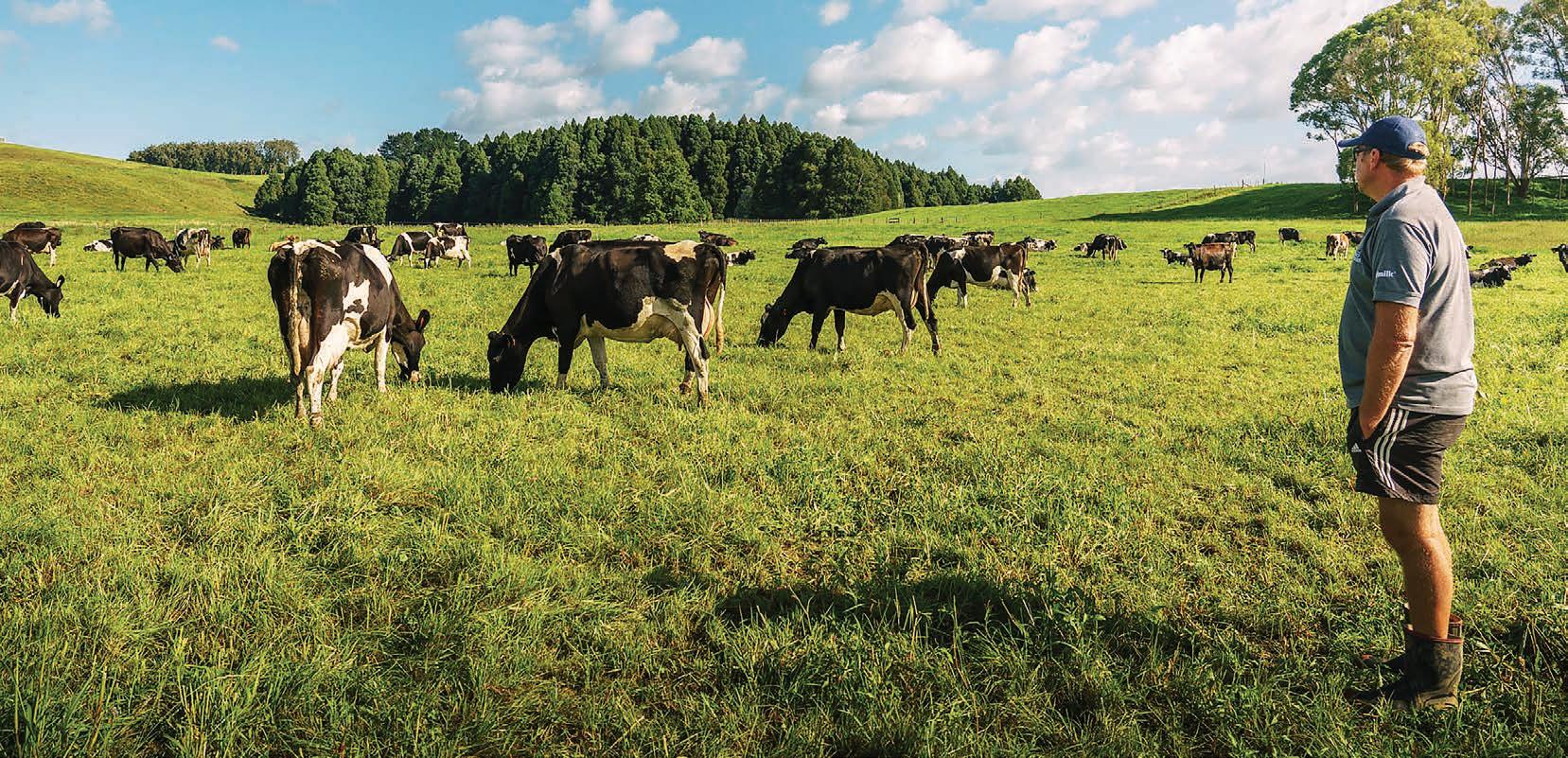
He also goes by milk production, so he knows which ones are the highest performing in the herd.
The cows that don’t meet his requirements are bred to beef to reduce

the number of bobby calves, and he’s dabbled in a few different breeds, including Speckle Park, Charolais, Belgian Blue and Wagyu.
“The Speckle Park calves are easy to feed, they find the milk and go straight for it. The meat is beautiful, they grow quickly and have good temperament,” he said.
When it comes to the traits he wants to see in his cows, udder health and capacity are at the top of the list, followed by feet and structure. With a goal of having cows that can produce over 600plus milk solids, he wants to be certain their udders can handle it.

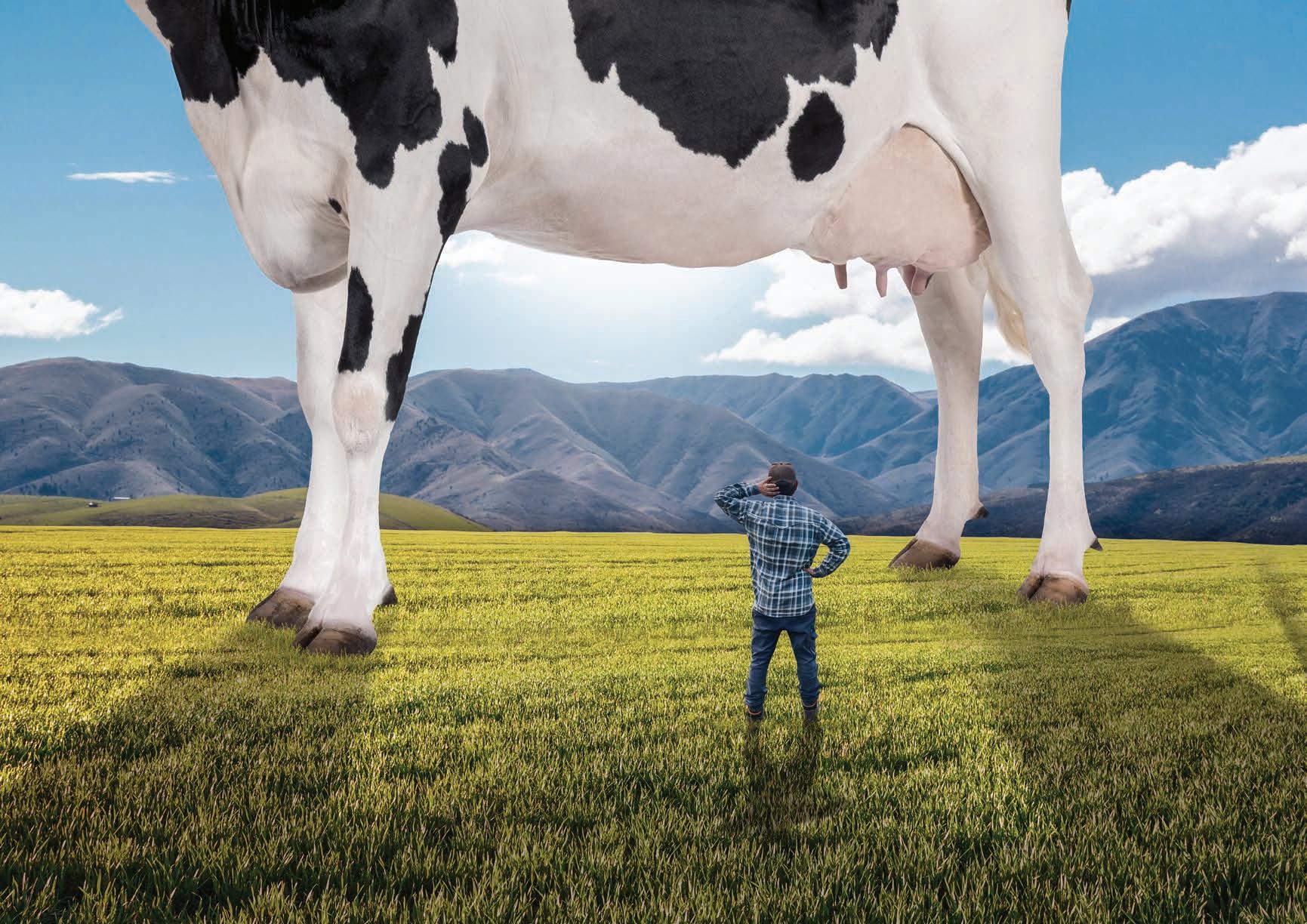
The long, narrow farm means the cows need to be capable of walking long distances with minimal issues. However, time walking will soon be cut down significantly for the cows with the addition of a new composting barn. The new purpose-built composting barn will be used throughout the season to ensure the cows and pasture are well taken care of.
His next goal is to bring in another breed to gain heterosis and bring down the live weight of the herd.
“We don’t want the cows to get too
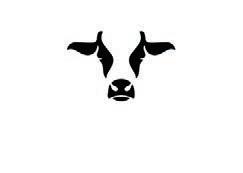
The new purpose-built composting barn will be used throughout the season to ensure the cows and pasture are well taken care of so more work can go into breeding.
big. We’re around a 560-580kg live weight and we’re wanting it to be around 530-550kg, so this year we’re looking at using Jerseys over the big Holsteins.”
Aukati is a high-input farm, with the cows being weighed daily and given feed from the farm in shed. The amount of feed they get is calculated on an individual basis depending on production, weight potential and pregnancy status. The Browns are currently feeding around 2t of maize silage per cow.
“We’re looking at feeding around 6t of feed a cow, but obviously still focusing on pasture first,” he said.
He believes individual feeding is important as it allows you to target each cow based on their specific needs.
For the Browns, taking care of their cows and farm in a sustainable way is at the heart of what they do.

“We’ve got individual milk metres, fat and protein readers, weigh scales, automatic heat detection and testers for mastitis. With switching from pedometers to collars we’ll also have
rumination and other health alerts. Five years in and I think we’re still transitioning across to the type of system we want, but we’re always adapting.” n
Cows that meet certain requirements will be mated with sexed semen for high-value replacements.
“We’ve got individual milk metres, fat and protein readers, weigh scales, automatic heat detection and testers for mastitis. With switching from pedometers to collars we’ll also have rumination and other health alerts.”
Nicki Webster, Dorie, Mid Canterbury.

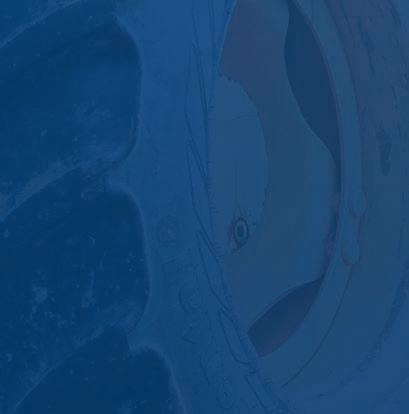





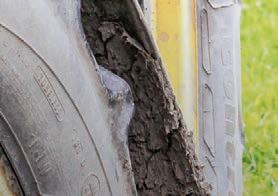



Good cows produce milk, and great cows do that and much more. Nicki and Peter Webster and their Sharemilker AJ Keller of Dorie, Mid Canterbury are working alongside CRV to craft a herd that is more profitable and a pleasure to milk and manage. We asked Nicki why having better cows leads to a better life with CRV.





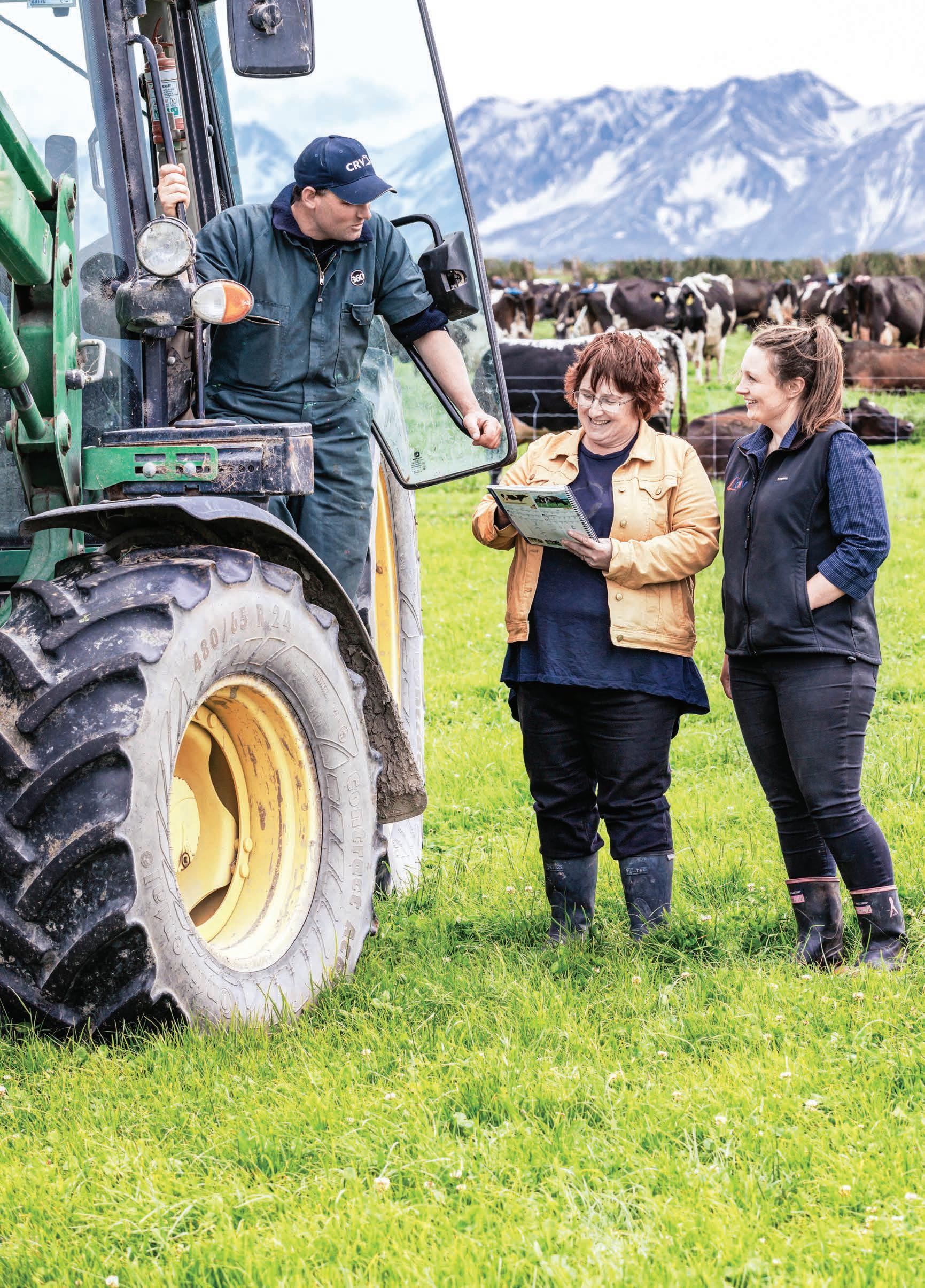
To watch the video follow the link below.















Better cows, better life.
‘We’re passionate about having the cows we want to have in our herd and in our shed.’
The CRV sexed semen team are more than ready for the upcoming autumn-calving mating, having completed training as their new lab geared up for mating last spring – and having carried out one lot of mating.
Experts from Brazil, India and the United States put the team at CRV’s new sexed semen lab through rigorous training over an 18-month period as they prepared to deliver high quality sexed semen to dairy farmers.
CRV has collaborated with Genus IntelliGen Technologies to bring innovative sexed semen technology to New Zealand. The technology is housed within a purpose-built laboratory at CRV’s Bellevue production and logistics facility in the Waikato.
Commissioned in February 2022, the new facility provides CRV with the capacity to produce sexed semen on a daily basis, tripling its production capacity as more dairy farmers look to accelerate the genetic gains and reduce bobby calf numbers.
The new facility is equipped with IntelliGen Technology, the only commercial laser-ablation semen sexing technology available in key global markets. The technology has successfully inseminated millions of cattle around the world.
Genus Laboratory manager Amanda Nonato from Brazil spent six months in NZ facilitating the training. She said the lab is well resourced with NZ technicians qualified in the intricate sexed semen production process.
“Our team here in New Zealand is employed by Genus to process semen from a selection of CRV’s best New Zealand bulls,” Nonato said.
“The entire team has been specially trained by our international experts in the delicate process to produce the very best sexed semen from these bulls using Genus’s world-leading technology.”
IntelliGen Technology’s process for developing sexed bovine genetics is gentler on the sperm cells than traditional sexed semen processes.
The technology does not subject
semen cells to the high pressures, electric currents and shear forces that are used in the traditional sexed semen technology, which reduces stress on the cells as they are processed.

Nonato said the training process has involved Genus’s experienced trainers working closely alongside trainees, observing their technique, and giving them feedback to ensure they consistently produce a high-quality product.
“The IntelliGen sexing process is unique and proprietary. I’m very happy and confident with everything that we have accomplished here in New Zealand. The team is already producing some topquality results and we will continue to work with them and train any additional new hires.
“New Zealand dairy farmers can maximise their herds’ genetic gain through using CRV sexed semen as we are offering our very best bulls that are leading in health and efficiency.”
CRV operations manager Andy Medley said it was challenging to set up the new lab with NZ’s borders closed due to covid-19. However, everything is now in place and the lab is already operating 24 hours a day, five days a week.
Medley said NZ farmers’ demand for sexed semen continues to grow year by year, and “the innovative technology we are using at Bellevue means we can provide farmers with a high-quality



CRV operations manager Andy Medley says New Zealand farmers’ demand for sexed semen continues to grow year by year.


sexed product to help them maximise their profitability and achieve genetic gains faster and in a more efficient way”.
The semen is put through a preliminary quality control process to make sure it is viable and motile. The cells are stained and loaded onto the technology platform where the sex skew in the sample is identified.
• A sperm cell containing female DNA is heavier and denser than that with male DNA. Cells pass by a detection laser and software detects the difference in DNA content. The system identifies the sought-
after female cells and uses another laser to inactivate the unwanted cells. The desired cells and the inactivated cells are combined and included in the straw. Cells are prepared with the right buffers for freezing and packaged at the right concentration.
The straws are frozen. Each batch must pass stringent quality control criteria and is then ready for transport to customers on farm.

Afarmer may have two cows of similar size and similar levels of production but there could be a 20% difference in their feed consumption. Data has been showing that animals with high feed conversion efficiency consume 17-24% less feed than their inefficient counterparts.
With environmental pressures, rising input costs and a growing population to feed, efficiency is becoming increasingly important. Fortunately, there are ways farmers can accelerate genetic gain for feed conversion efficiency in their herd.
“It’s a pretty exciting concept,” said Brett Fitzhenry, genetics product manager at STgenetics.
“Feed conversion efficiency has a heritability of around 0.24, which can be higher than milk production and farmers can use bulls with high genetic merit to target gains in their herd.
“There’s also the opportunity to genotype their cows to identify which ones are more efficient, and speed up progress even further.”
STgenetics has an index, EcoFeed, which measures feed conversion efficiency, known as residual feed intake (RFI). The RFI is a way to measure what a particular animal is eating compared with what they were expected to eat based on their performance and maintenance requirements.
“EcoFeed as an index is used widely internationally, particularly in the United States, and when it is built into a farmer’s breeding programme they can target it to make faster gains,” Fitzhenry said.
“Efficient animals consume less feed than we’d expect based on their size and what they are producing and that’s a win for a farming business because it helps reduce costs and makes feed go further.”
If cattle are consuming less feed while maintaining the same or higher levels of production, there will be less land needed to produce feed, less fertiliser and pesticide used to grow feed, less
water and energy used to irrigate land for feed, and less fossil fuel for tractors and other farm equipment.
“There are plenty of environmental and sustainability impacts to consider, particularly the positive correlation between reduced feed intake and greenhouse gas emissions, as more efficient animals will produce less methane, manure and carbon dioxide per unit of production.
“And there is a connection with water too: high feed conversion efficiency cows use less water than low cows to make a unit of milk.”
STgenetics began extensive research into feed conversion efficiency in 2014. There is a lot of data produced in the US and the principles remain the same across any system. The index has been utilised in New Zealand since 2017 and it is getting more attention as costs are scrutinised from all angles.

“Feed is such a variable input cost for farmers and it’s a great opportunity to be able to identify the animals that require less feed per unit of product and utilise that to impact net profit.”
Through their research, STgenetics
have developed two types of EcoFeed indexes for dairy animals, EcoFeed heifer and EcoFeed cow. The heifer index predicts the feed conversion efficiency of heifers in the growing or rearing phase of life, and the cow index predicts the feed conversion efficiency of a cow during lactation.
The two indexes are positively correlated, which means there are no negative impacts when selecting either. When making breeding and replacement decisions, farmers should identify genetics with their ideal production, reproductive and health traits while considering superior scores for lifetime feed conversion.
EcoFeed scores can also be applied to beef sires, where calves from bulls with a high score will consume less feed than calves from sires with lower scores, without negatively affecting growth or performance.
“Basically, some animals are genetically programmed to convert feed more efficiently and farmers have the ability to identify who they are and make breeding decisions based on that information.”
New Zealand and Ireland bucked the trend when it came to commercial dairy feed production last year, according to the 2023 Alltech Agri-Food Outlook report.
Most countries experienced a decline, mainly due to the high cost of feed combined with low milk prices, which caused farmers to reduce stock numbers as well as rely more on non-commercial feed sources. But higher milk prices in New Zealand and drought in Ireland increased demand.
Across the other sectors, increases in feed tonnage were reported in the aquaculture, broiler, layer and pet food sectors, and decreases were reported in the beef and pig sectors. And despite significant macroeconomic challenges that affected the entire supply chain, global feed production remained steady at 1.266 billion metric tonnes in 2022, which is only a 0.42% decrease from 2021’s estimates.
Europe was worst hit as it faced significant disease challenges, severe weather and the impacts of the invasion of Ukraine. The global covid-19 pandemic has had major impacts on the agrifood sector, contributing to supply chain challenges and accelerating the adoption of new technology and environmental sustainability practices.
Pet feed production had the highest increase among the sectors, with a global average rise in production of 7.25%. This significant increase is largely due to the rise in pet ownership during the pandemic. North America and Europe continue to be the top pet feedproducing regions.
The Alltech Agri-Food Outlook looks at data from 142 countries and more than 28,000 feed mills. Alltech works with feed mills and industry and government entities around the world to compile data and insights and offer a holistic look at the state of the industry.
Respondents said the biggest challenges affecting the agri-food sector in 2022 were inflation and the overall state of the economy, particularly the increased prices of raw materials, feed and food. Supply chain disruptions remain an obstacle for the agri-food industry across all regions, and animal diseases have disrupted feed production in more than 80% of countries.
Many regions reported that geopolitical tensions, particularly the invasion of Ukraine, have affected imports and exports, the supply chain and the cost of raw materials.
When it comes to consumer trends, 72% of respondents identified product prices and the economy as having
the biggest impact on agri-food. Food security, dietary trends and animal welfare were also identified as having large impacts.
Survey respondents recognised that a variety of technologies are providing growth opportunities for the agri-food industry. Among the technologies making the biggest impact are nutritional solutions, biosecurity and the automation of labour including robotics.

Innovative technologies that increase efficiency and improve sustainability were cited by many survey participants as being highly promising and important. And efforts to improve environmental sustainability are impacting the feed/animal agriculture sector in most regions.
“The biggest opportunities for growth are sustainable solutions for production costs, research and development for more durable and productive agricultural products [to mitigate] climate change, and new agricultural production technologies,” said a respondent from Turkey.
To access more data and insights from the 2023 Alltech Agri-Food Outlook, including an interactive global map, visit alltech.com/ agri-food-outlook.
In his nearly 37 years on Rushbrook Farm a Canterbury farmer has seen a huge improvement in its pasture and soils, something he puts down to the cows as well as the effective use of effluent.
Now nearly 84, Phil Garrett bought Rushbrook Farm at Leeston, south of Christchurch, near Lake Ellesmere/ Te Waihora, in 1986 and has farmed it since then with his son Andrew. It was among the first farms in the district to be converted to dairy farming. Originally 103ha, the property has now grown to 440ha and milks 1000 cows, but with young stock usually carries 1750 cattle. One of the things that attracted Garrett to the property was the
availability of water for irrigation from shallow wells. But the high water table makes the farm prone to becoming very wet – wet enough to make farming very difficult.
“We had to build the dairy in a muddy paddock and it was raining and it was a struggle to get it built,” Garrett said. They learnt to work around the mud but eventually it became too much.
“We were just sick of it and my son Andrew said one day, ‘We need to build a pad or something’,” he said.
In 2012 they built a large shed, with 897 stalls that can safely hold 1000 cows, or up to 1200 for two or three days if there’s a snowstorm or similar weather event.
“We have had to do that at times and
put dry stock in as well to keep them off the pasture.
“We have one herd in at night and they graze outside during the day and the other herd comes in during the day and grazes outside during the night.”
The hybrid shed/pasture system has seen production virtually double through efficient feeding and pasture management. An important part of that is using effluent from the barn and cowshed as “organic fertiliser”. Almost no other fertiliser is used.
“The pastures have improved so much in the last 10 years without any fertiliser, just effluent, it’s absolutely astounding and we haven’t put any new grass in –they’re all old pastures with dandelions and God knows what. They grow like fury.
“We’re on a 10-day grazing round, which will startle a lot of people,” said Garrett, who also said they only feed grass that’s short and sweet, topping if it gets too tall or making silage it gets taller still.
The effluent is collected in a 12 million litre storage pond next to the barn and every year about 32 million litres is spread over the whole property.

“Every 12 hours in the shed is 25,000 litres of potential fertiliser. Sure, there’s a cost of spreading – but against that is less urine patches and more even pasture growth, with no fertiliser purchases.”
Ashburton contractor Matt Lovett spreads the effluent with a tanker that lays the slurry at the base of the plant, and he’s on farm every 10-14 days. The effluent is first agitated by two big

stirrers and then a suction pipe fills the 28,000 litre tanker via one of the funnels protruding from the side of the pond. It can spread up to a million litres a day.
“We have taught a lot of other people how to use their effluent,” Garrett said.

of farms and they’re saving the fertiliser bill.”
When Garrett bought some adjoining land that had been cropped for 50 years with nothing being put back, he saw the remarkable power of effluent to restore exhausted soils.


“It was in grass when we took it on and we just shut the gate and left it and thought there’d be enough feed there for winter for the cows, but nothing grew for 12 months until we started to water it. It had rain but it just wouldn’t grow, it was just dead, completely robbed, but now with cows being on it and the effluent going on, it’s one of the best blocks on the farm.”
The organic fertiliser is also used on the 85ha of maize grown on the farm every year, along with a small amount of nitrogen added at sowing, the only additional fertiliser used.

“When Lovetts first started coming here, they were going to other places where they were told, ‘Dump it all in that paddock there,’ but Matt told them we were spreading it over the whole farm and now he’s doing that on a hell of a lot
“That will be chopped for silage at the end of March. We made about 17t a hectare last year, which is not bad for Canterbury. We’ve had it one paddock for 10 years in a row and it’s getting better.” n
Ashburton contractor Matt Lovett spreads the effluent with a tanker that lays the slurry at the base of the plant. He’s on farm every 10-14 days.
“We have one herd in at night and they graze outside during the day and the other herd comes in during the day and grazes outside during the night.”
Phil Garrett
As we approach the winter months it’s important to be prepared for the challenges and uncertainties that come with unpredictable weather events. Winter can be challenging enough as it is, so having some contingency measures in place can help take some of the stress off. Here are some contingency measures you can take to protect your farm:
Ensure council and dairy company compliance
Make sure you’re compliant with both your local council and dairy company (this will likely be a condition of supply). The last thing you need over winter is to be pressured to make changes, or worse, slapped with a fine. If you’re unsure or just want expert advice on the best plan of action so you can do it once and do it right, talk to an accredited effluent management system designer. They’ll be able to tailor a plan for your situation.
Ensure the functionality of your storm water diverter
Now is a good time to make sure your storm water diverter is functioning correctly or get one installed if needed.
it filling up with rain.
It is important to empty your ponds and storage in preparation for spring. This is a good opportunity to review your effluent equipment in terms of efficiency, effectiveness and functionality and repair/replace anything that is not up to scratch.

Portable effluent management equipment that doesn’t require electricity to operate can be a huge benefit.
Prepare storage and effluent management equipment
If you need more storage, or want back-up storage, consider purchasing a bladder tank. These can be both costeffective and easy to install, requiring minimal earthworks. As they are closed storage, you also won’t be worried about
Tractor-driven PTO pond stirrers can be taken to multiple storage areas and are also great to ensure the pond is thoroughly mixed before emptying, with minimal sludge or solids left behind. PTO pumps are great for pumping thicker slurries and from various places.
As for spreading, both drag-hose systems and slurry tankers give the ability to spread anywhere over the farm. Drag-hose systems are an efficient option for farms with large storage
“Now is a good time to make sure your storm water diverter is functioning correctly or get one installed if needed.”
wanting to empty ponds fast, and all in one go. Slurry tankers are a great all-round solution. They allow for easy spreading when you want, while also being great for handling thicker slurry, and cleaning out ponds, troughs, underbarn storage and weeping walls without the mess of a digger.

If you live in an area prone to flooding, consider purchasing a flood pump as a “no-brainer” insurance policy. The key to saving crops and pasture from drowning is time, so pumping the water off fast is critical. It will also save the stress and hassle of having to re-grow and buy in additional feed. Sharing a pump with your neighbours could be a good option if appropriate.
If you do have or get a flood pump, find a good place to park it so that in the event of a flood you can act fast to deploy it. The faster you can act, the less impact the water will have on your crops and revenue.




With unpredictable weather patterns,
With winter throwing up some challenges for farmers, having a contingency plan in place will ensure they remain compliant with their local council and dairy company.
it’s important to be prepared for power outages. Consider purchasing backup generators or alternative sources of energy to ensure your farm can continue to operate during outages. By taking these steps now, you can have peace of mind knowing your farm is
as protected as you can make it against the challenges and uncertainties of the winter months.
Michael Prestidge is a Nevada Effluent management specialist.
It fills in less than 4 minutes, and the RainWave applicators are just real easy. We go about 4km/h and it’s got a very even spread. It’s real simple and it works well.
Ross Clark owns a 600 cow dairy farm in Midhurst and sharemilks on a 700 cow dairy farm further down the coast.

The two farms have quite different effluent storage set-ups. Ross’ farm has two Herd Homes® and 3 effluent ponds, while the other farm has a 5,000,000L pond. So there’s a lot of effluent to manage.
After learning a bit more about Ross’ situation, Mike at Nevada suggested a slurry tanker to solve the issues across both farms. A slurry tanker would be able to clean out the Herd Homes® as well as the thicker slurry in the tank. He’d also be able to spread when and where he wanted.
‘Now we can just leave the cows in their [Herd Homes®], lift a couple of grates, give it a stir, and suck it all out with the slurry tanker. We can just do what we want now, and it’s a lot quicker.’
Ross did shop around at other slurry tanker options, but ultimately chose to go for a Nevada 20,150L slurry tanker with loading accelerator.
‘It has everything we wanted – turbo-fill, 8” sucker line, and the pricing was very competitive.’

Time was tight as a Waikato farmer tackled the big job of cutting himself a new effluent pond.
It took two tractors and trailers operating for a week to remove all the dirt that had been tracked into a Waikato farmer’s effluent pond over the past 40-odd years.

Stephen Neville owns the 164ha farm milking 330 cows at Reporoa. Over the years the property has been expanded, and more cows, more concrete and modern regulations meant the old system was due for an upgrade – but first he had to excavate the old one.

“The original pond was built in 1984 by damming the gully below the cowshed and forming two ponds,” Neville said.
“Back then the farm was 90ha with a 10-a-side dairy shed and we were milking 160 cows.
“Now there are 330 cows calving in autumn on 164ha, with a 24-a-side shed and covered feedpad and due to the new regulations we needed to upgrade our effluent pond.”
The pipework from the cowshed, the races and the feedpad were all going to the existing pond and to prevent solids and dirt from entering the tank again Neville was keen to install sandtraps. But due to the location, it would have been difficult to install a lined pond so he decided the best option was an aboveground pond from Kliptank with a 1.4 million litre capacity.
But it was a challenge to get the new pond installed in time for the herd to start calving again.
Over the years the farm has expanded and a new effluent system is being installed and a covered feedpad built. Earthworks at the site of the new storage site.
“There was a tight window to have the new pond ready, though, as we only had four weeks between dry-off and calving since we were using the same location.
“It was full steam ahead the day the cows were dried off, removing the old dam and digging out the sand and dirt that had accumulated over the years.
“Using two tractors and trailers we carted a massive amount of dirt to enlarge the pond to fit the new tank.”
Kliptank provided some basic
information that guided Neville in the preparation process as he did a lot of the work himself. He credits his experience in farming and “give it a go” attitude for his ability to tackle projects like this.
“I’ve always just given things a go, you can only learn it by trying.”
Since it was the middle of summer he did not anticipate the amount of groundwater they would be dealing with as well as contending with one of the wettest summers on record. They excavated the back of the hill and laid 70m of drainage pipe to remove the water, which flowed like a creek.
For the pond foundation, they utilised pumice from the farm to fill the hole and layered a geotextile cloth before adding 200mm of metal and another layer of pumice.
The new tank should be more than enough for their system.
“A lot has certainly changed since we built that old pond and there were a lot of considerations to determine what would be the most appropriate system now.
“Being solely autumn calving, the shed is in full swing during the wettest part of the season and there is a lot of concrete around the shed and feedpad that captures rain and runoff.
“We are hoping to have at least a month’s worth of storage but we do have the ability to move it.”

They will maintain the same effluent spreading processes they had before, using the irrigator for liquid and a slurry tanker for the solids. They purchased the tanker to help deal with the solids coming off the feedpad as it does not get blocked like an irrigator tends to. The solids get spread monthly, usually onto crop paddocks.
The sandtraps will help capture silage and the feed trough overflow that mixes in with the effluent on the feedpad before it makes its way to the pond.

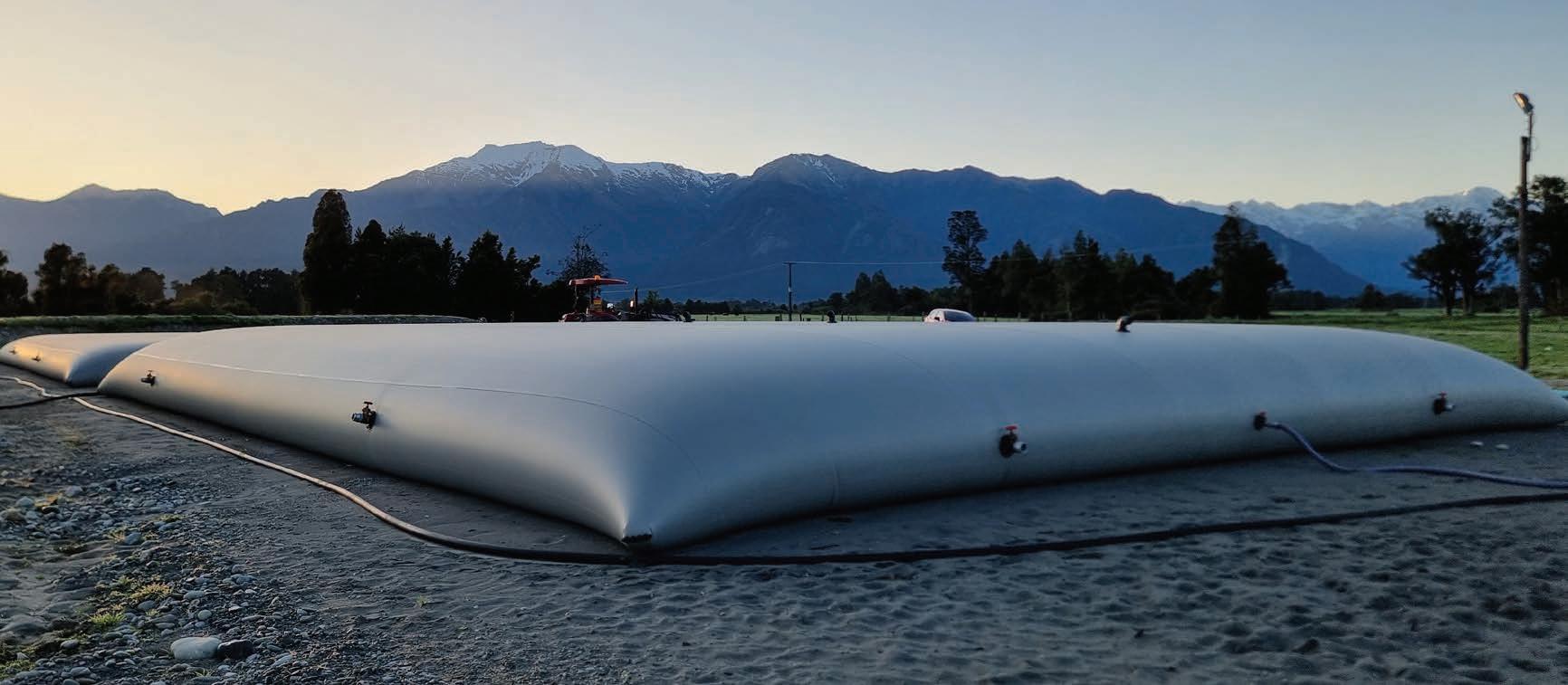
“We have always tried to scrape off as much silage as we can into the solids bunker but there’s always some that gets into the effluent, so the sandtraps will help prevent that problem.
“We should have all our bases covered now, it has been a lot of work but I am really happy with how it has turned out.”



His son, Alastair Neville purchased the herd in 2010 and has been back home running the farm since he returned from university at the end of 2011. They
began transitioning to autumn calving in 2017 with that being their final spring calving.
Despite having a feedpad, pasture is their main focus. They installed it to help utilise grass better and the herd spend around four hours on it each day around milkings. Their staple diet consists of grass, maize and lucerne silage, which is stored in bunkers beside the feedpad. They also utilise kiwifruit, a palm kernel blend and sometimes carrots or other vegetable waste.
Now the system is almost complete,
Neville is feeling relieved as it will be their final piece of main capital expenditure for a while.
“It should be smooth sailing from now on.”

His feedback to other farmers who are starting to look at their effluent options is to take it on a farm and site basis to determine the best fit.

“A lot depends on where your cowshed is situated and the type of system you are running. Do your homework and get a good understanding of what will be right for your farm.” n

“It was full steam ahead the day the cows were dried off, removing the old dam and digging out the sand and dirt that had accumulated over the years.”
Stephen NevilleStephen Neville on his Allis-Chalmers HD6 crawler tractor and scoop, beginning the earthworks on the effluent storage site.














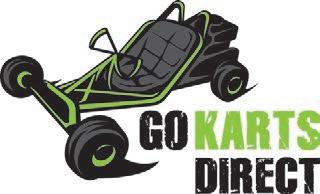







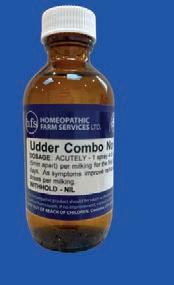

























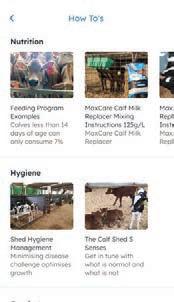





Ihave a message for our weather forecasters: please get your crystal balls fixed.
Although none of them guaranteed it or locked it in, many predicted a hot dry summer – but our farmers and indeed the rest of us are wanting to know “Where is summer?”
Instead of warm, lazy summer days, we have had the complete opposite in most parts of New Zealand, particularly the North Island.
With the north being hit by torrential rain and flooding in late January – and two weeks later we all had to endure ex-Tropical Cyclone Gabrielle, resulting in a national state of emergency being declared for only the third time in our history.

Landslides and homes tumbling off hills, people being swept away or cut off, people being helicoptered off their roofs or evacuated, stock being washed away, roads severely damaged, washed away and closed, and entire communities cut off ... it’s been a tough gig for everyone.
The tragic side to these weather events is the loss of life. At the time of writing nine people had lost their lives over the aforementioned events.
The impact of these events is long-
term and devastating for many. The clean-up and rebuilding of lives and infrastructure will take years.
Extreme weather has made it a particularly tough season all round. I have yet to talk to a farmer who hasn’t been affected by either rain, flooding or long dry periods, although these are few.
“What’s left of it is going to be a challenge,” he said.

Over the past couple of months I noticed farmers in my district harvesting and baling flat out and there was paddock after paddock full of big rounds. Hopefully, farmers elsewhere also managed to cut and store feed, which will help them over the coming months.
It appears to me that the entire world has, for want of a better word, angered Mother Nature. We are only two months into the year and New Zealand has been hit with floods as has Mozambique; two powerful earthquakes have devastated Türkiye and Syria, killing thousands and displacing millions of people, wildfires are raging ... the list goes on and on.
But one thing the weather forecasters did get right was the early warning of these two events. Many I spoke to managed to move their stock to safety and secure as much as they could. I have heard several stories of farmers who have opened their farms to help other farms to milk their herds.
One farmer told me he saw some of his paddocks completely disappear under water that had begun receding, but leaving a trail of branches, mud and debris in its wake.
Climate change? Perhaps. Depends on what science you are reading or who you are talking with and listening too. Either way, let’s hope Mother Nature forgives us all, and soon. Maybe we might get a nice warmish, dryish winter. Wouldn’t that be nice?
SonitaLike us: farmersweekly.co.nz
Follow us: @DairyFarmer15
Read us anywhere: farmersweekly.co.nz
“One thing the weather forecasters did get right was the early warning of these two events.”Scenes of devastation blanketed the North Island in mid February.
March 1 – Dairy Women’s Network
Leading self, live webinar
Latest research cites agility and flexibility as the most important characteristics people must have to succeed now, and in the future.
This session covers the key elements of leading ourselves, staying focused while growing, and ways to influence others through maintaining our own strong leadership core.
Info at www.dwn.co.nz/events
March 1 and 8 – DairyNZ
Cow wearables field day, Southland and Bay of Plenty
Hear from local farmers on buying collars for their herds, the advantages of collars in their farm system with the financial and physical aspects.
Info at www.dairyevents.co.nz
March 2 – DairyNZ
Progression Management, Whangarei and Taranaki
Grow your skills, improve performance

Improve how you interact with and manage your team, get up to speed with industry tools and technology, learn how to identify areas for improvement on farm, plan for a rewarding career and take control of your financial situation.
Info at www.dairyevents.co.nz
March 7 and 9 – Primary People
DairyNZ FarmTune 2023, Winton and Balclutha, workshop 3
A comprehensive programme that supports you and your team to implement Lean thinking on farm. For more information and/or to register, please contact Lynsey Stratford.
Info at www.primarypeople.co.nz/
March 9 – DairyNZ
Diverse Pastures Field Day
NOTE CHANGE OF DATE
What are you considering planting this autumn?
Come along to Geoff and Jo’s farm to look at how they are using different pastures to manage their particular challenges. This is an opportunity to hear from industry leaders and other farmers on a variety of pasture options.
Info at www.dairyevents.co.nz
March 10 – SMASH
Field day Building systems that work for you, Maungaturoto NOTE NEW DATE
Our hosts, farm owners Paddy and Debbie Thornton and contract milker George are one of the top DairyBase performers in the Northland region with FWE in 2021/22 of $3.70/kg MS. At this event we will delve into their farm operation and how they get their results.
Info at www.smallerherds.co.nz
March 16 – DairyNZ
Waikato Women’s autumn group
Let’s play matchmaker – pasture to suit your system Come and join Jen Corkran (pasture specialist for Barenbrug) at their plant breeding research & development site near Cambridge.
Info at www.dairyevents.co.nz
March 23 – SMASH
Opunake field day, details to come Info at www.smallerherds.co.nz
March 27, 28 and 29 – DairyNZ
Meeting the Environmental Future, Winton, Balclutha and Gore What can you do now?
You asked and we are delivering the science: tools that can mitigate greenhouses gases and nitrogen loss on your farm, while remaining productive and profitable. Info at www.dairyevents.co.nz
March 29, 30 and 31 – DairyNZ
MilkSmart, Morrinsville, Te Awamutu and Dargaville
Improve your milking efficiencies with MilkSmart
The first step to milking smarter is an efficient milking routine, and DairyNZ’s MilkSmart tool can support you in this. Info at www.dairyevents.co.nz
DairyNZ
Business by the Numbers, online, various dates and locations
Get practical techniques and confidence to manage the numbers in an agribusiness.
Step through the process of preparing and monitoring accurate farm budgets to stay on top of farm finances. Info at www.dairyevents.co.nz
Dairy Women’s Network
Great Futures in Dairying, various dates and locations
Great people, great jobs, great workplaces – helping you make it happen
Delivered in partnership by DairyNZ and Dairy Women’s Network.
People is a hot topic right now. Farmers tell us every day and we can see the impact. Info at www.dwn.co.nz/events
